Imagine walking into a lush rainforest, where towering trees wear green crowns of plants on their trunks. Among them, one stands out—a magnificent fern with antler-like leaves, looking as if nature has sculpted it from pure artistry. This is the staghorn fern, a fascinating plant that grows suspended in the air, thriving in its own unique way.
Whether you’re an avid plant collector or just discovering the wonders of staghorn ferns, this guide will introduce you to all their types and how to care for them like a pro!
Contents
- 1 Meet the Staghorn Fern Family
- 1.1 Platycerium bifurcatum (Common Staghorn Fern)
- 1.2 Platycerium bifurcatum ‘Talnadge’
- 1.3 Platycerium bifurcatum ‘White’
- 1.4 Platycerium bifurcatum ‘Blue Ribbon’
- 1.5 Platycerium bifurcatum ‘Netherlands’
- 1.6 Platycerium superbum (Superb Staghorn Fern)
- 1.7 Platycerium superbum ‘Dwarf’
- 1.8 Platycerium veitchii (Silver Staghorn)
- 1.9 Platycerium veitchii ‘Snow White’
- 1.10 Platycerium veitchii ‘Pedro’
- 1.11 Platycerium veitchii ‘Lemoinei’
- 1.12 Platycerium veitchii ‘Silver Sarracenian’
- 1.13 Platycerium veitchii ‘Hokage’
- 1.14 Platycerium veitchii ‘Lumina White’
- 1.15 Platycerium veitchii ‘Auburn River’
- 1.16 Platycerium hillii (Hill’s Staghorn Fern)
- 1.17 Platycerium hillii ‘Bahia’
- 1.18 Platycerium hillii ‘Raijin’
- 1.19 Platycerium hillii ‘Papuanum’
- 1.20 Platycerium hillii ‘Dragon’
- 1.21 Platycerium hillii ‘Panama’
- 1.22 Platycerium hillii ‘Mio’
- 1.23 Platycerium andinum (South American Staghorn)
- 1.24 Platycerium andinum x willinckii (Platycerium saikaew)
- 1.25 Platycerium andinum x elephantotis (Platycerium antis)
- 1.26 Platycerium alcicorne (African Staghorn Fern)
- 1.27 Platycerium alcicorne ‘Africa’
- 1.28 Platycerium alcicorne ‘Gorgon’
- 1.29 Platycerium coronarium
- 1.30 Platycerium coronarium ‘Dwarf’
- 1.31 Platycerium coronarium ‘Philippines’
- 1.32 Platycerium coronarium ‘Philippines Dwarf’
- 1.33 Platycerium ridleyi
- 1.34 Platycerium ridleyi ‘Dwarf’
- 1.35 Platycerium ridleyi ‘Dwarf Silver’
- 1.36 Platycerium wandae
- 1.37 Platycerium wandae ‘Dwarf’
- 1.38 Platycerium stemaria
- 1.39 Platycerium stemaria ‘Laurentii’
- 1.40 Platycerium stemaria ‘White’
- 1.41 Platycerium madagascariense
- 1.42 Platycerium elephantotis
- 1.43 Platycerium elephantotis ‘Silver’
- 1.44 Platycerium elephantotis x alcicorne ‘Madagascar’
- 1.45 Platycerium elephantotis x willinckii
- 1.46 Platycerium quadridichotomum
- 1.47 Platycerium holttumii
- 1.48 Platycerium holttumii x ellisii
- 1.49 Platycerium grande
- 1.50 Platycerium grande x elephantotis
- 1.51 Platycerium willinckii
- 1.52 Platycerium willinckii ‘Moonlight’
- 1.53 Platycerium willinckii ‘Anne’
- 1.54 Platycerium willinckii ‘Silvery Dwarf’
- 1.55 Platycerium willinckii ‘Kaguya’
- 1.56 Platycerium willinckii ‘Dwarf’
- 1.57 Platycerium willinckii ‘Bacteria’
- 1.58 Platycerium willinckii ‘Dwarf Bacteria’
- 1.59 Platycerium vassei / Platycerium alcicorne ‘Madagascar’
- 2 How to Care for Staghorn Ferns
- 3 How to Propagate Staghorn Ferns
- 4 Final Thoughts
Meet the Staghorn Fern Family
There are 18 recognized species in the Platycerium genus, each with its own charm, along with various cultivars and hybrids that showcase unique frond shapes, colors, and growth habits. Here are some of the most captivating ones:
Platycerium bifurcatum (Common Staghorn Fern)
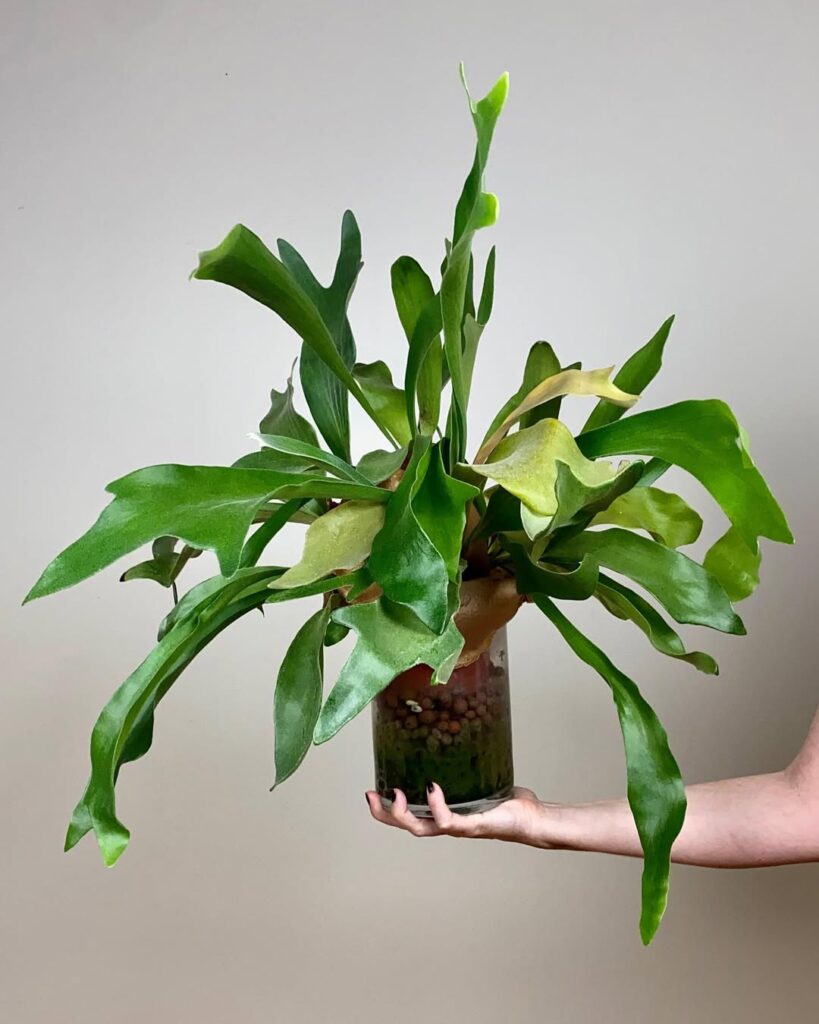
This is the most well-known species, loved for its resilience and adaptability. It’s often found in hanging baskets or mounted on boards, thriving in homes and gardens worldwide.
Platycerium bifurcatum ‘Talnadge’
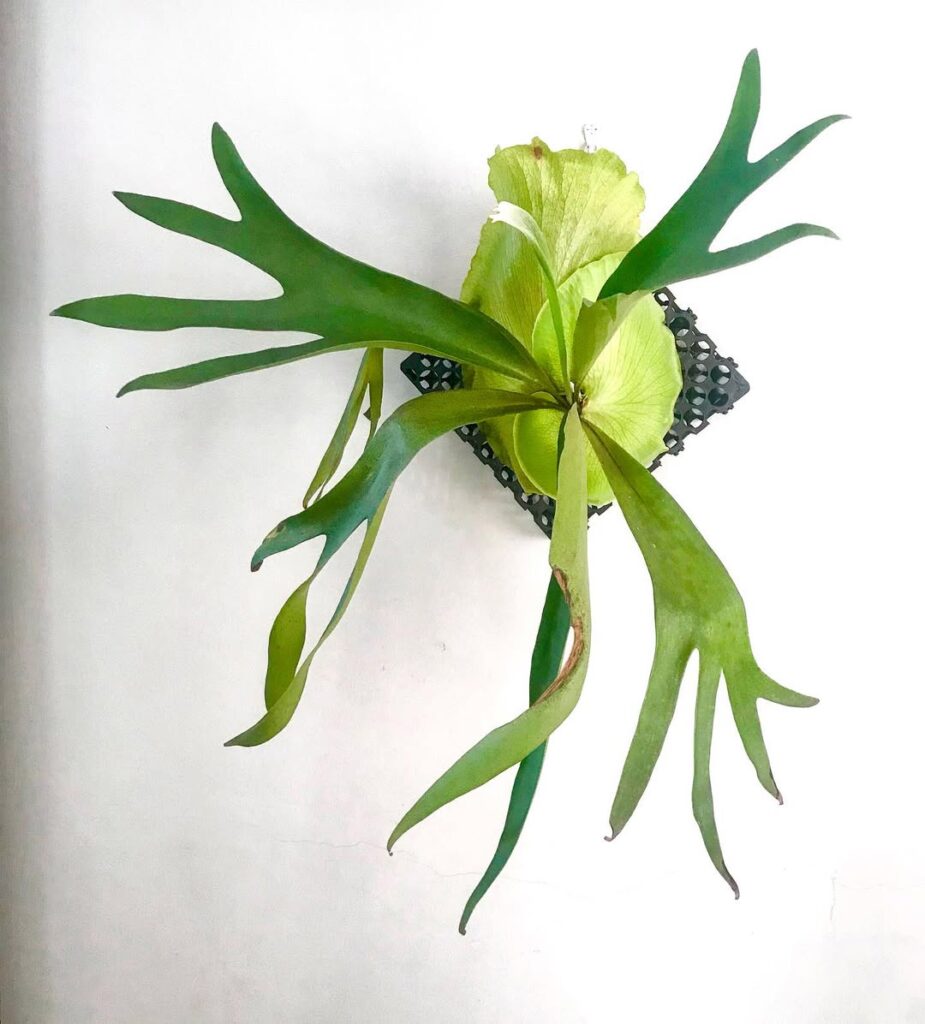
Platycerium bifurcatum ‘White’
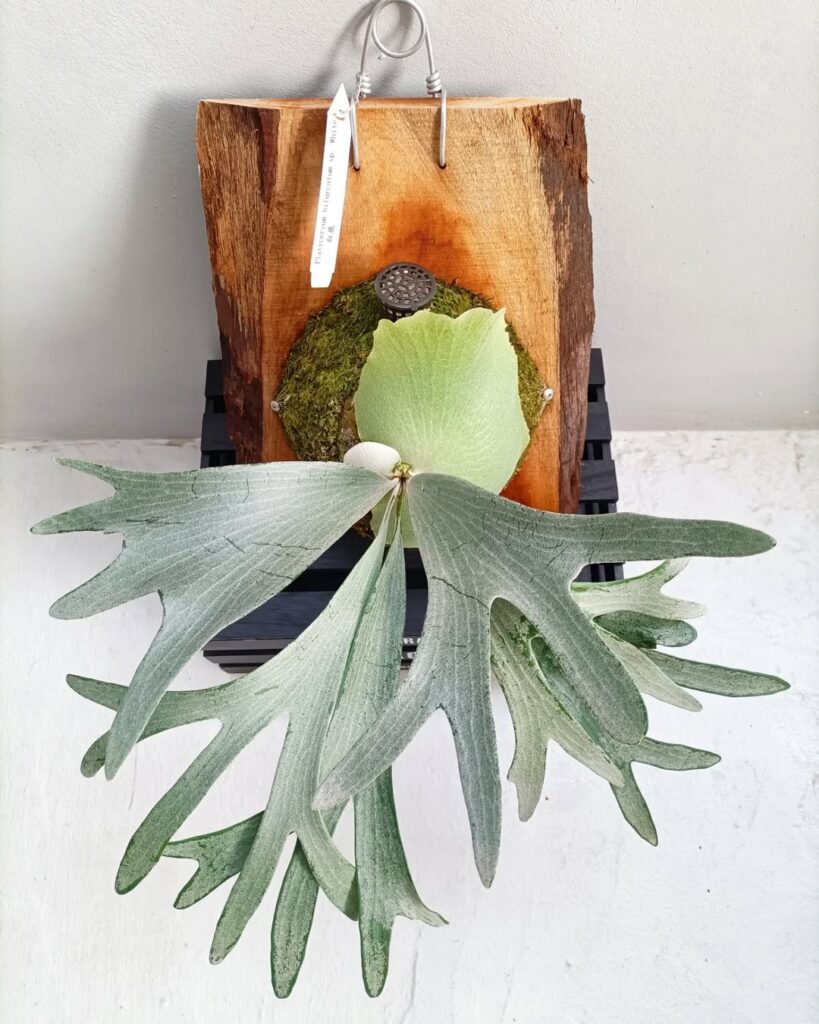
Platycerium bifurcatum ‘Blue Ribbon’
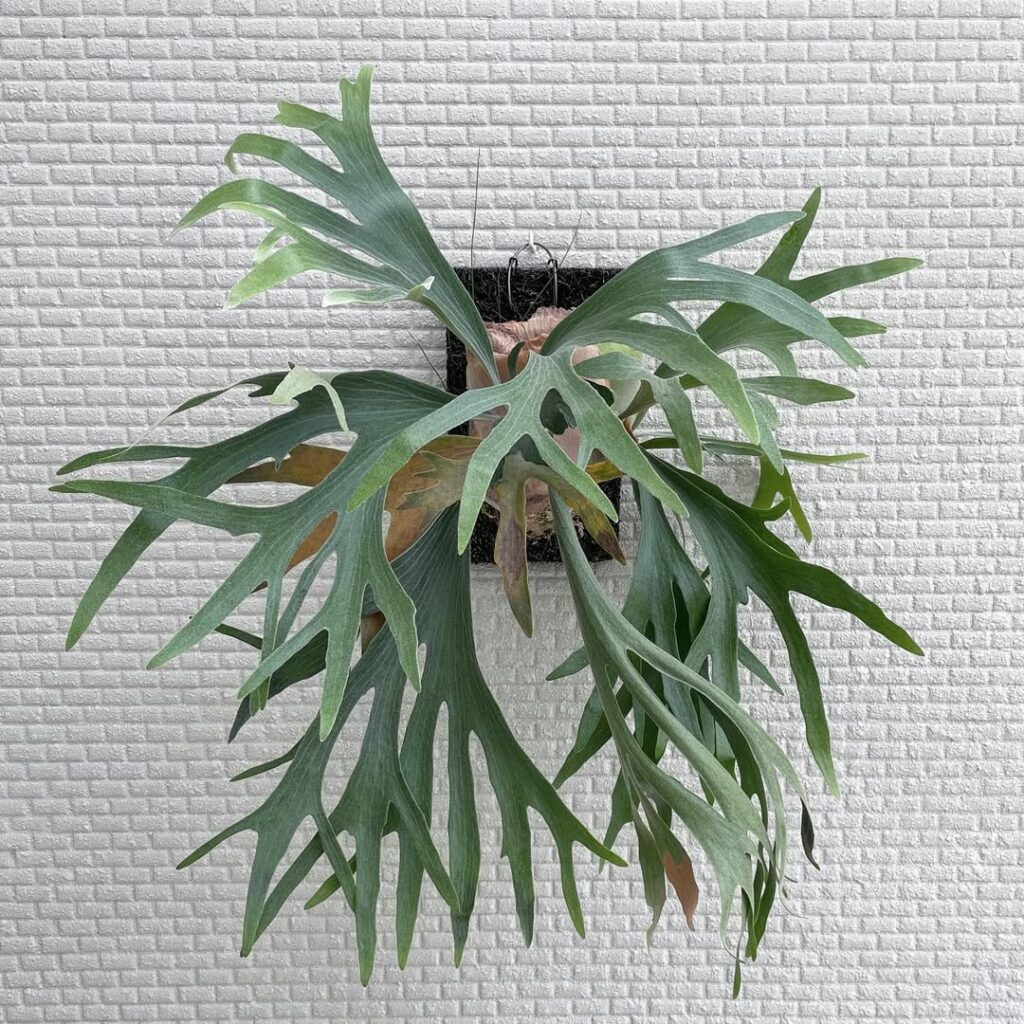
Platycerium bifurcatum ‘Netherlands’
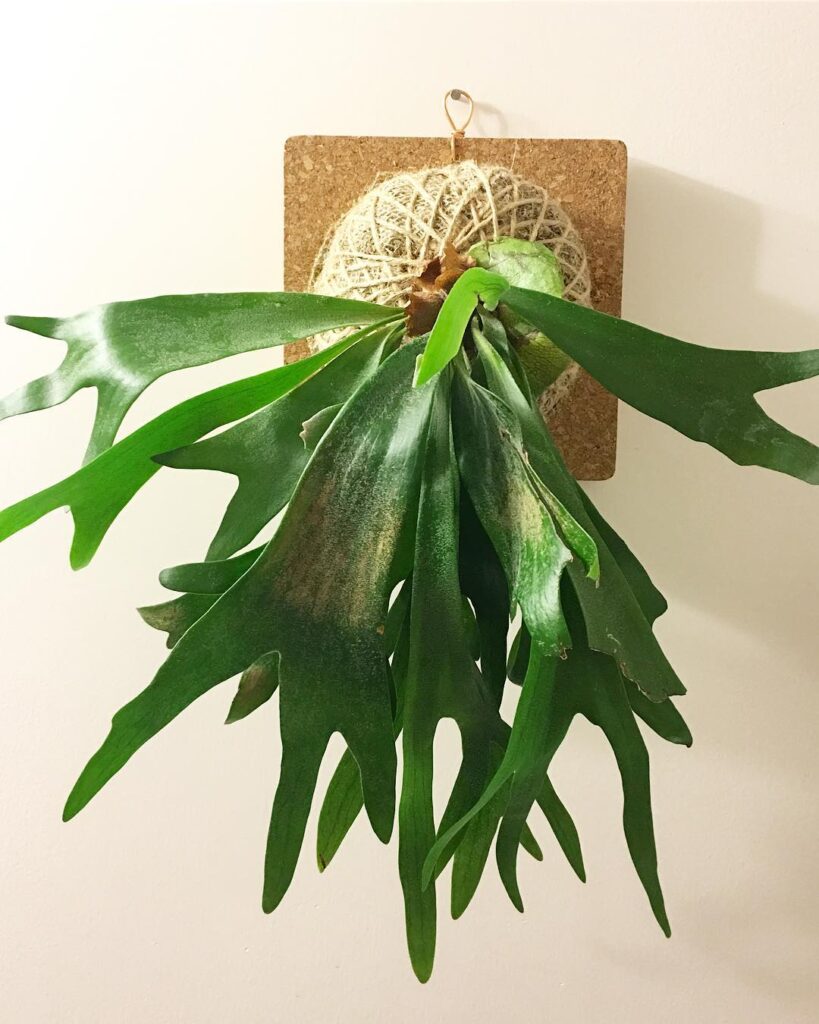
Platycerium superbum (Superb Staghorn Fern)

True to its name, superbum grows massive shield fronds that curve dramatically. This species prefers more humidity and is often seen as a showstopper in botanical gardens.
Platycerium superbum ‘Dwarf’

Platycerium veitchii (Silver Staghorn)
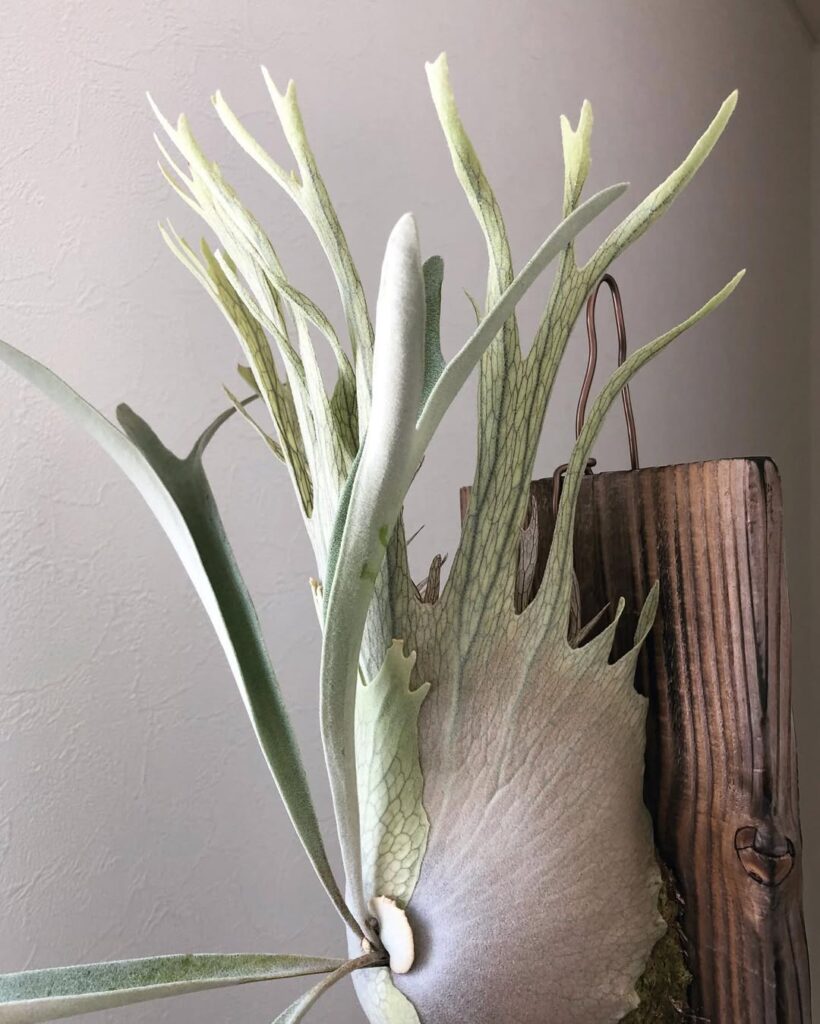
This Australian-native fern has silvery fronds that help reflect sunlight and conserve water. It’s more drought-tolerant than other species, making it perfect for warmer climates.
Platycerium veitchii ‘Snow White’
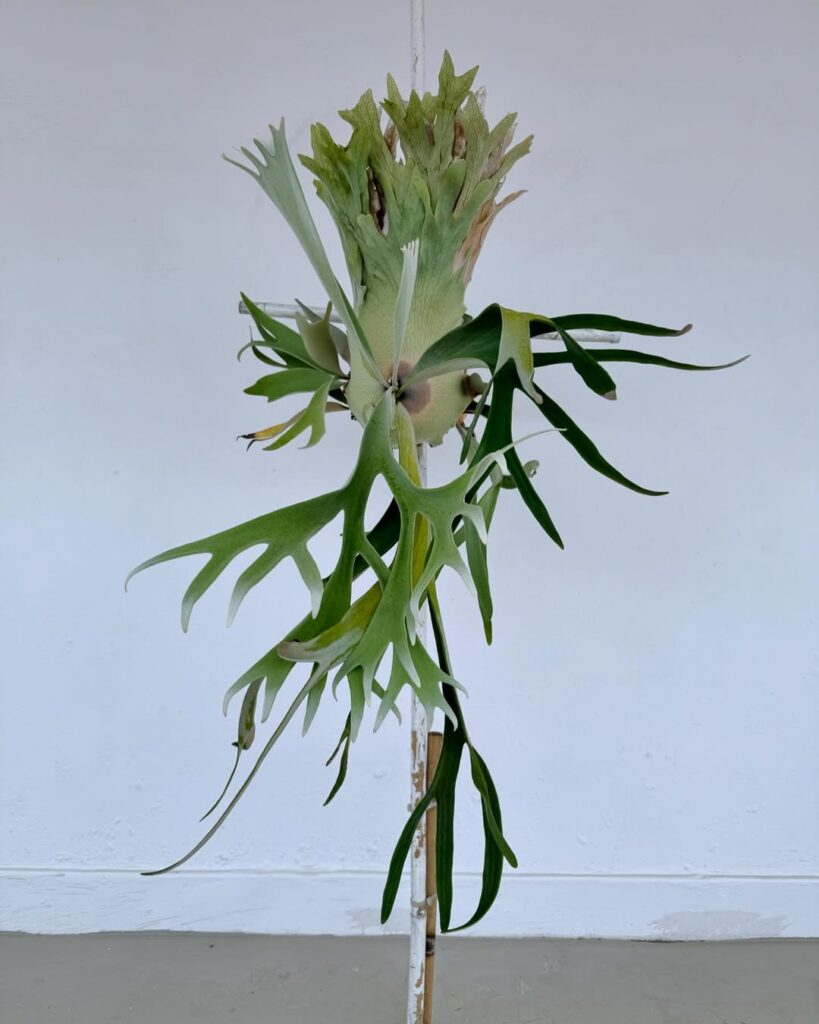
Platycerium veitchii ‘Pedro’
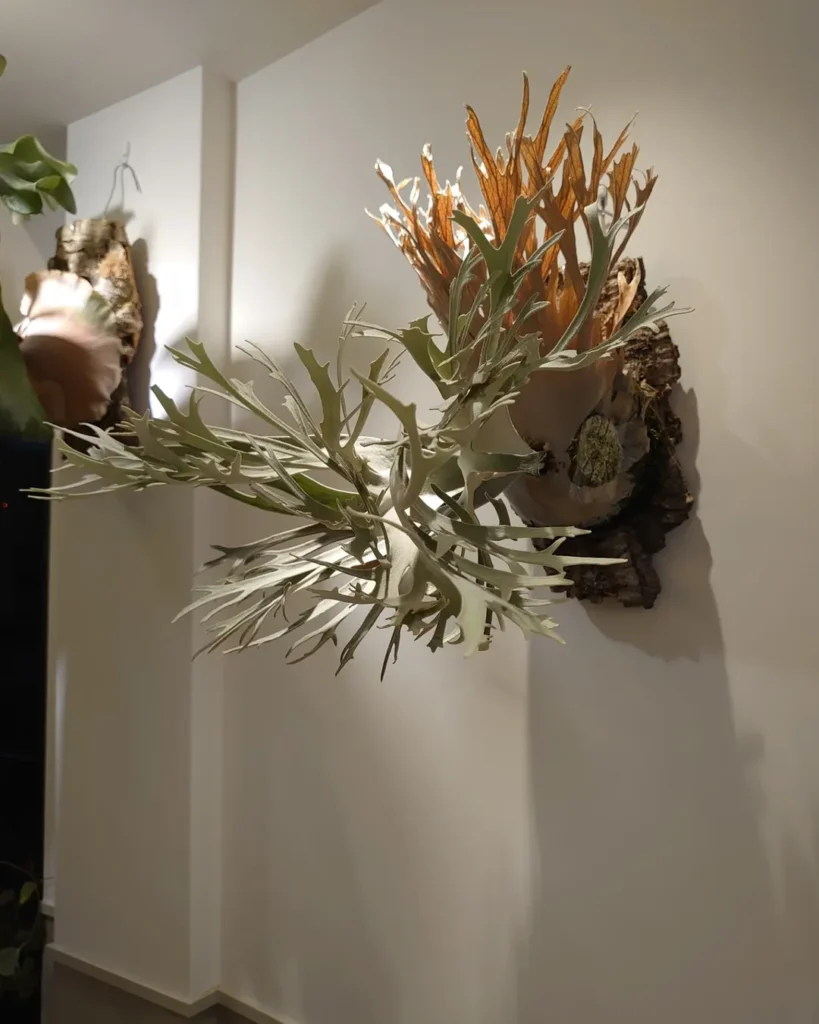
Platycerium veitchii ‘Lemoinei’
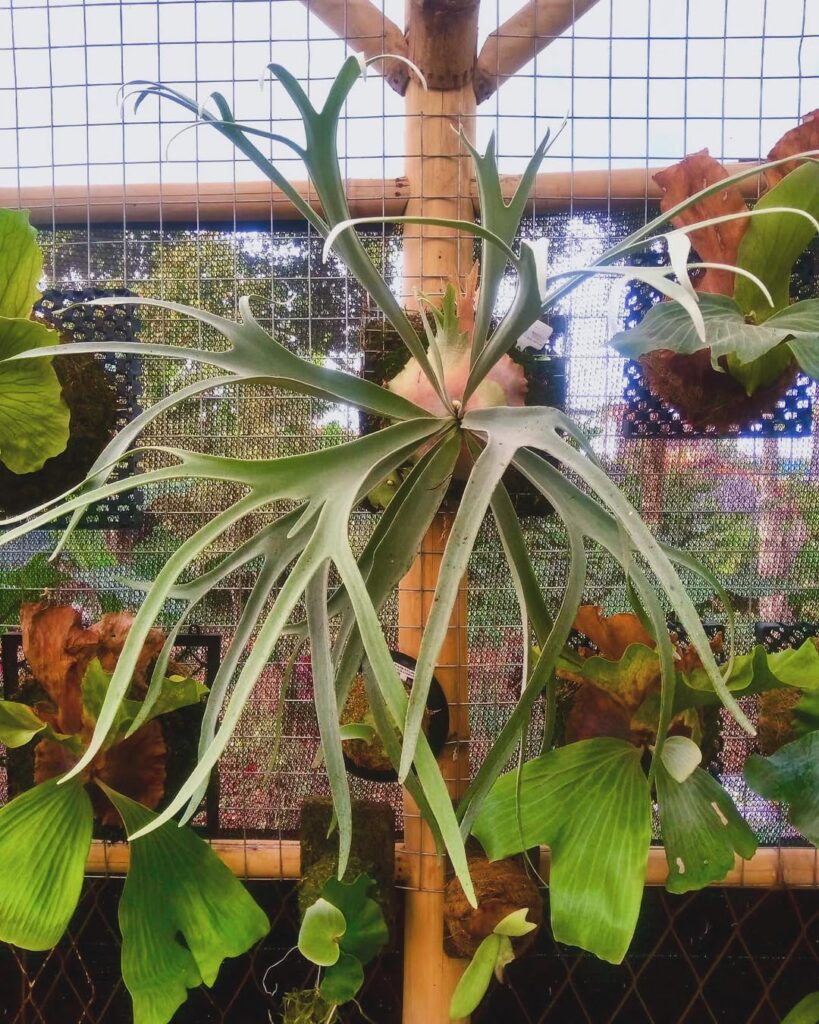
Platycerium veitchii ‘Silver Sarracenian’
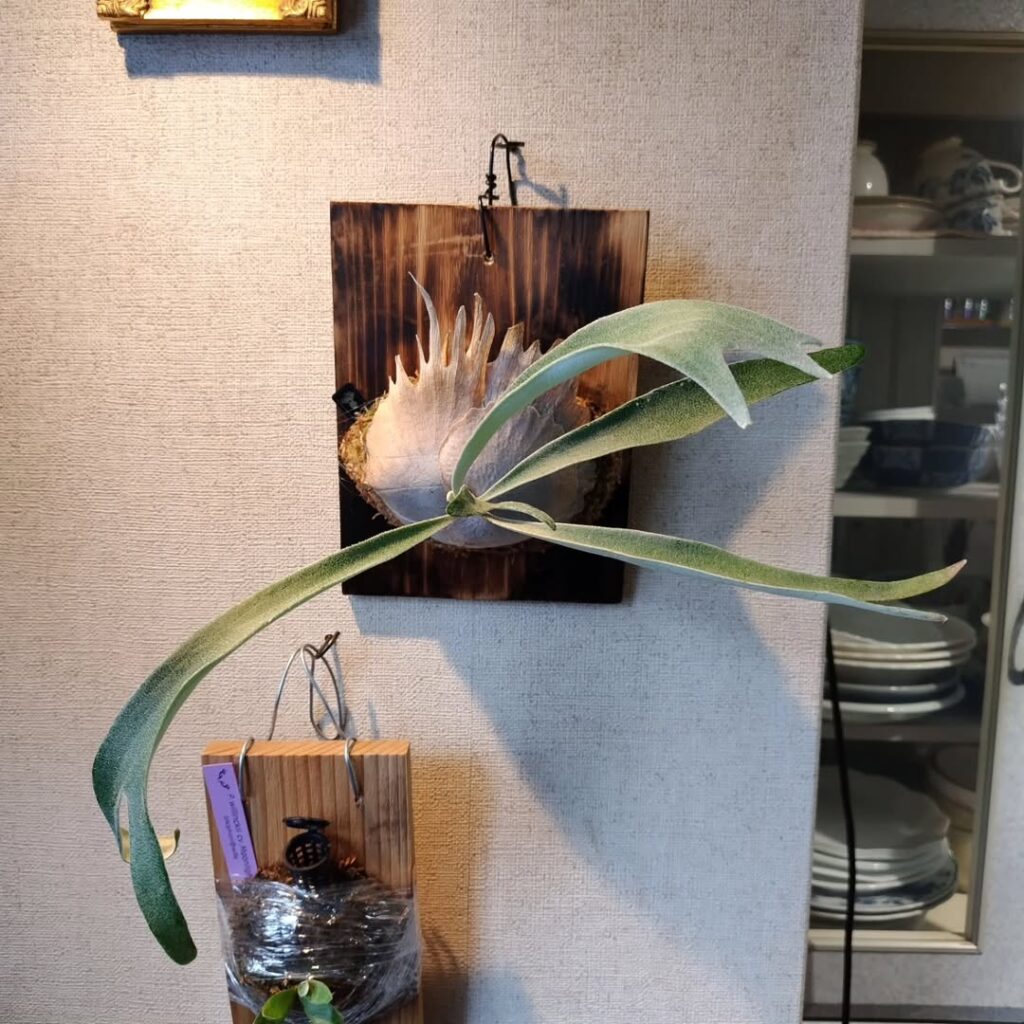
Platycerium veitchii ‘Hokage’
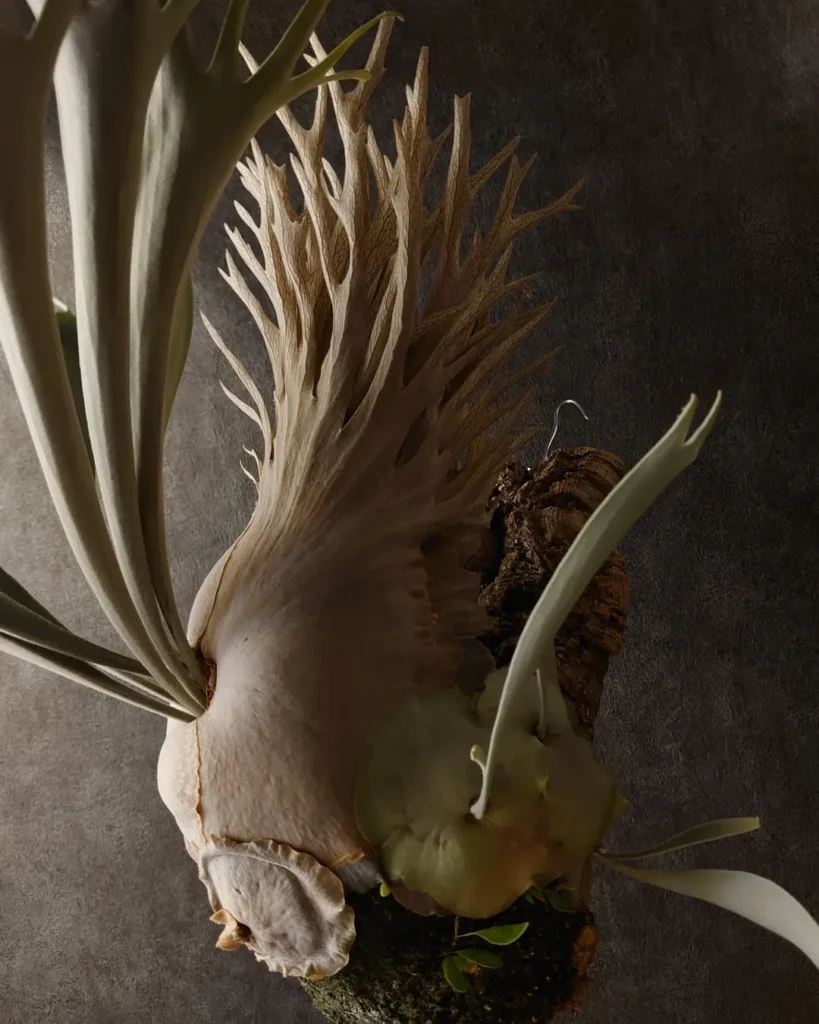
Platycerium veitchii ‘Lumina White’
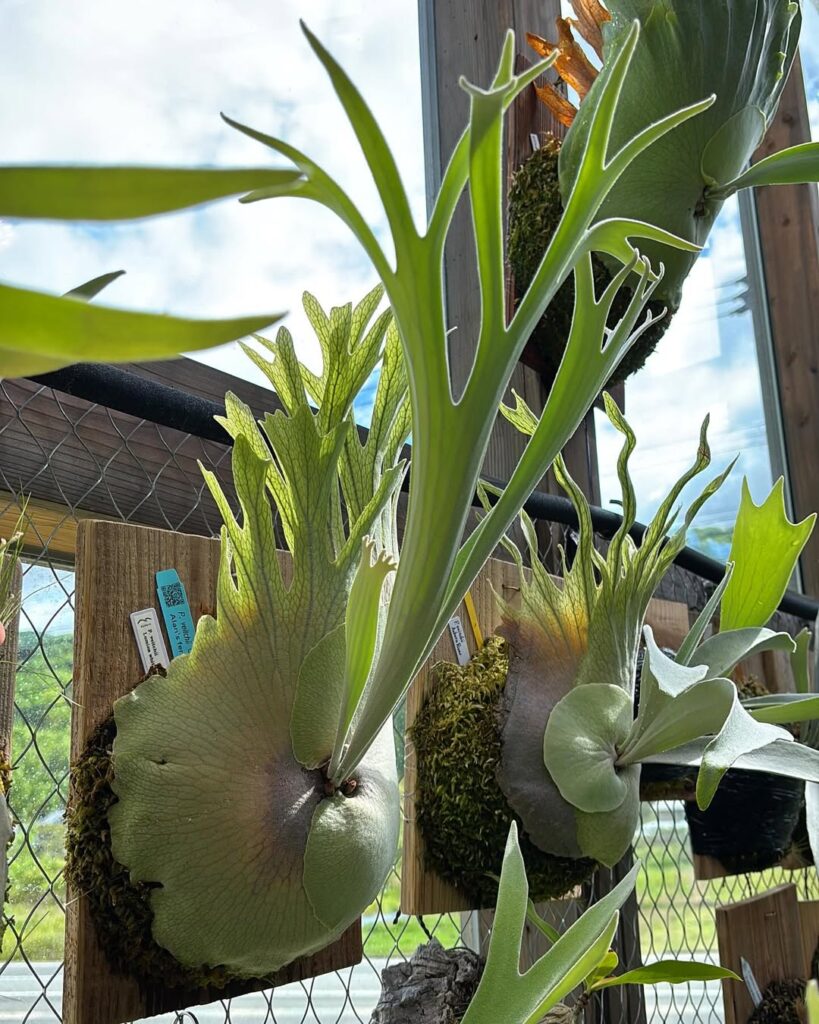
Platycerium veitchii ‘Auburn River’

Platycerium hillii (Hill’s Staghorn Fern)
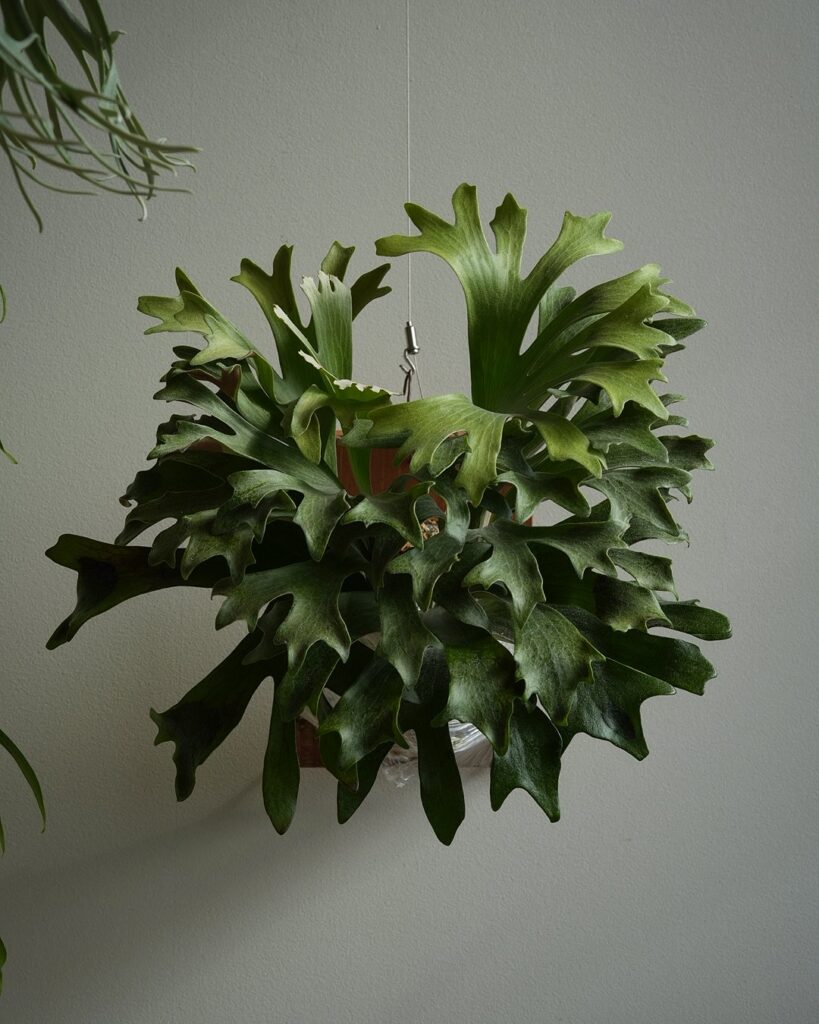
A favorite among beginner collectors, hillii has smaller, structured fronds with a deep green hue. It thrives indoors with moderate care.
Platycerium hillii ‘Bahia’
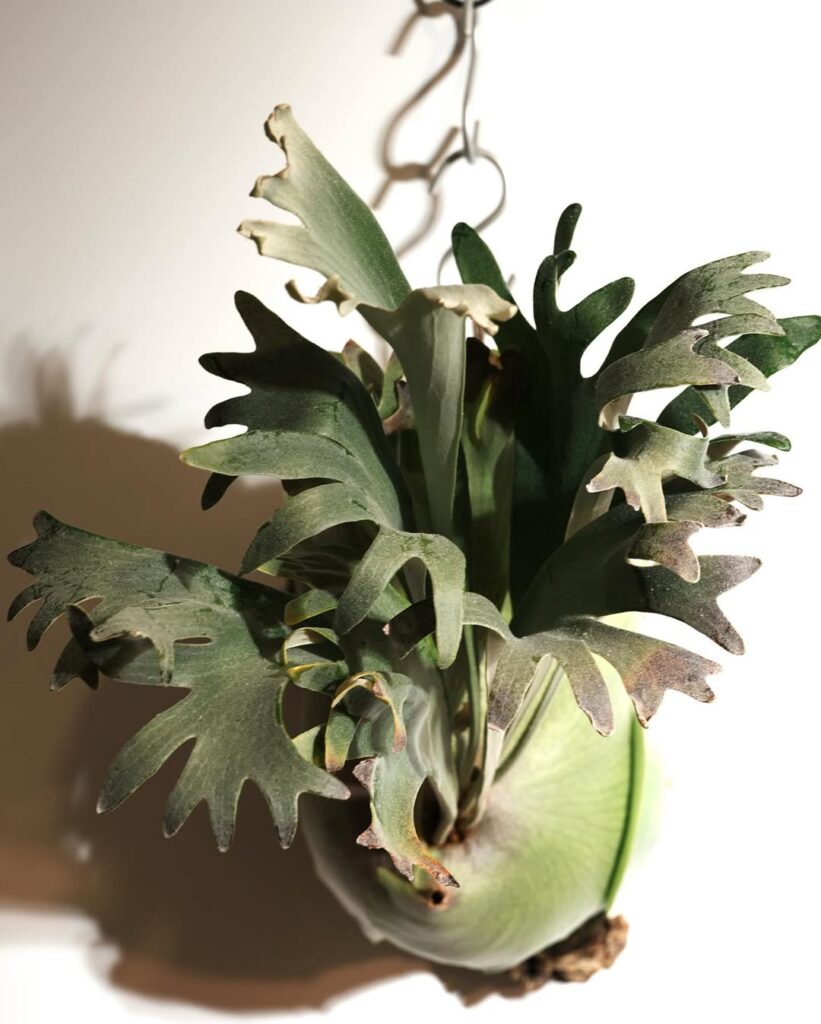
Platycerium hillii ‘Raijin’
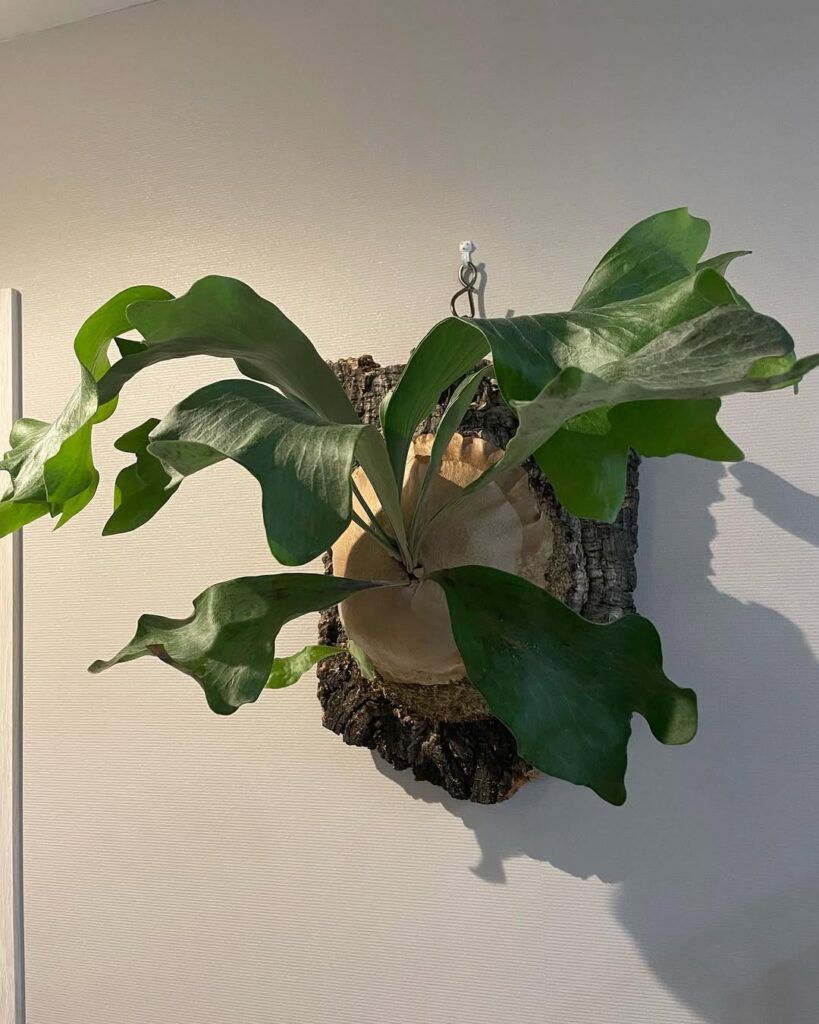
Platycerium hillii ‘Papuanum’
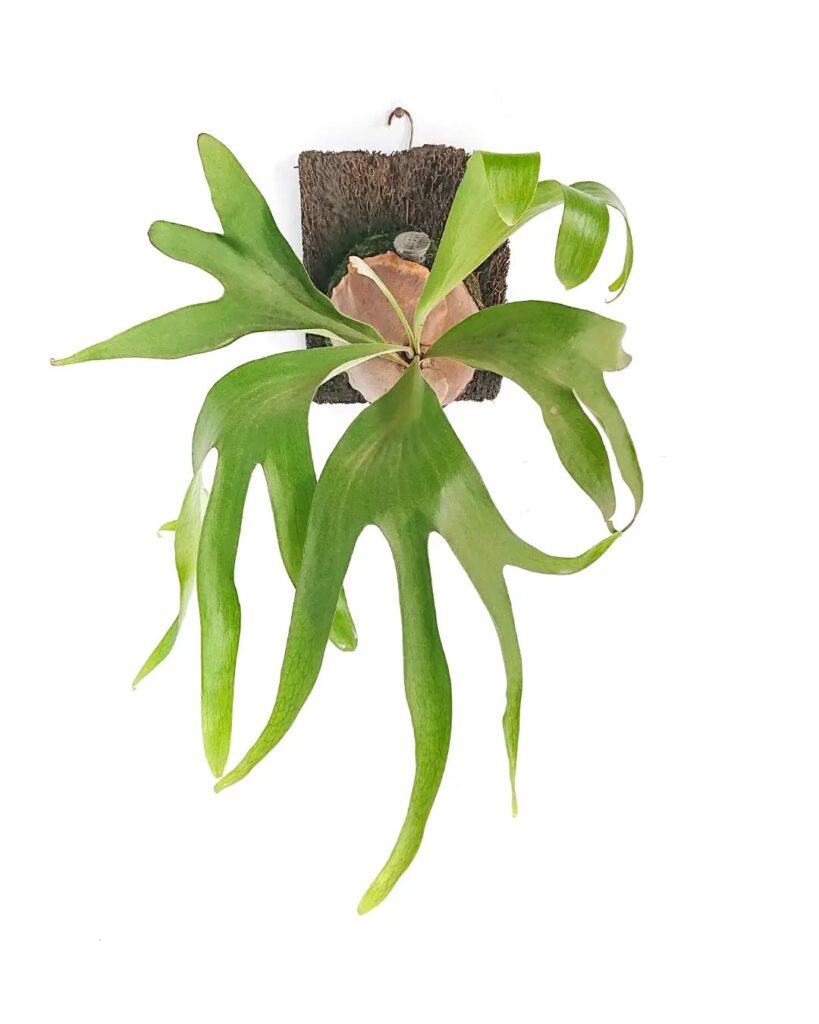
Platycerium hillii ‘Dragon’
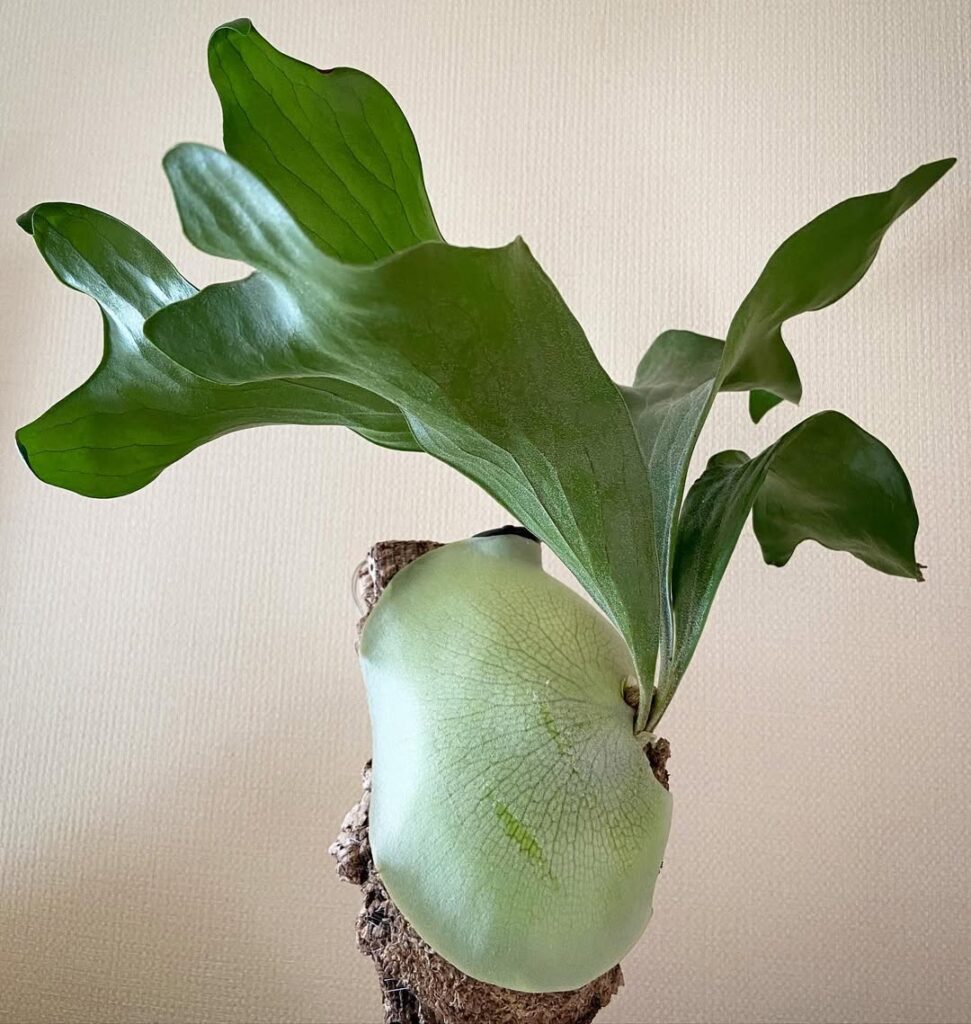
Platycerium hillii ‘Panama’
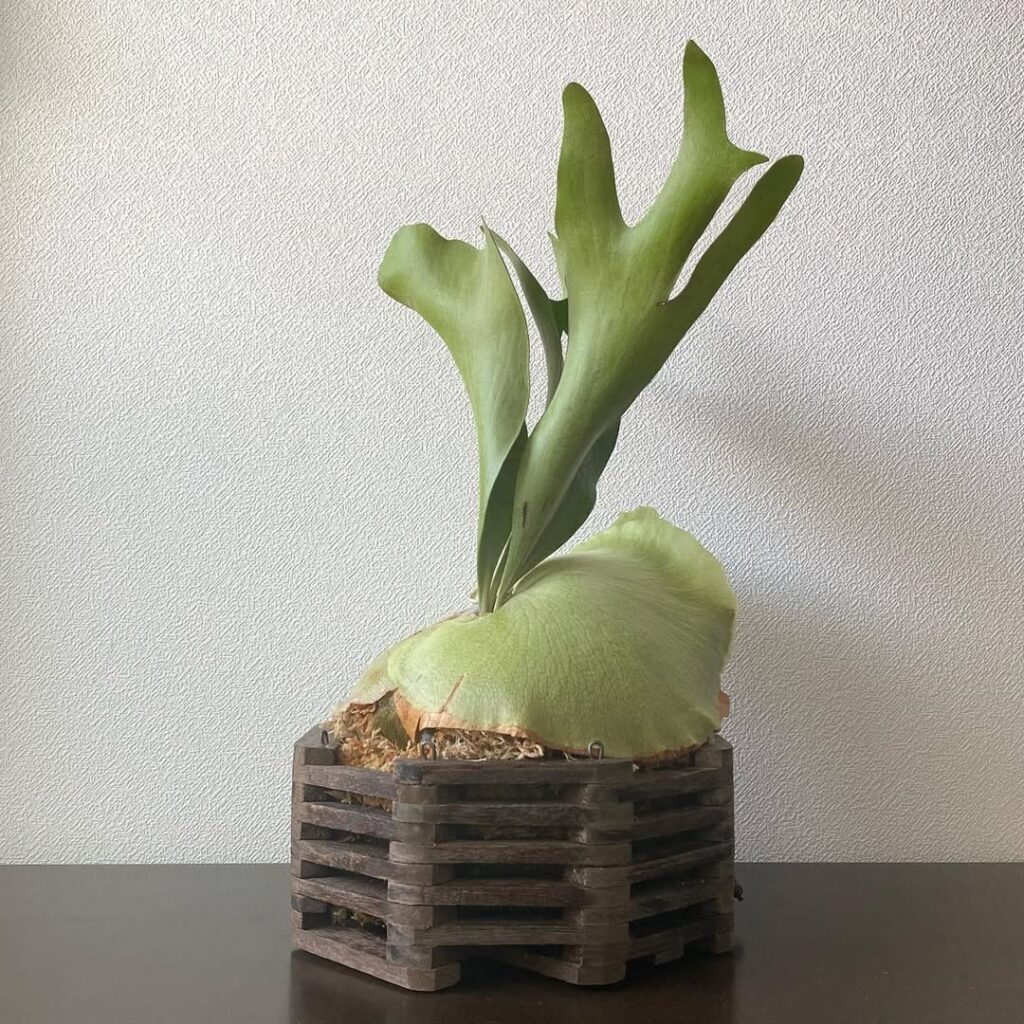
Platycerium hillii ‘Mio’
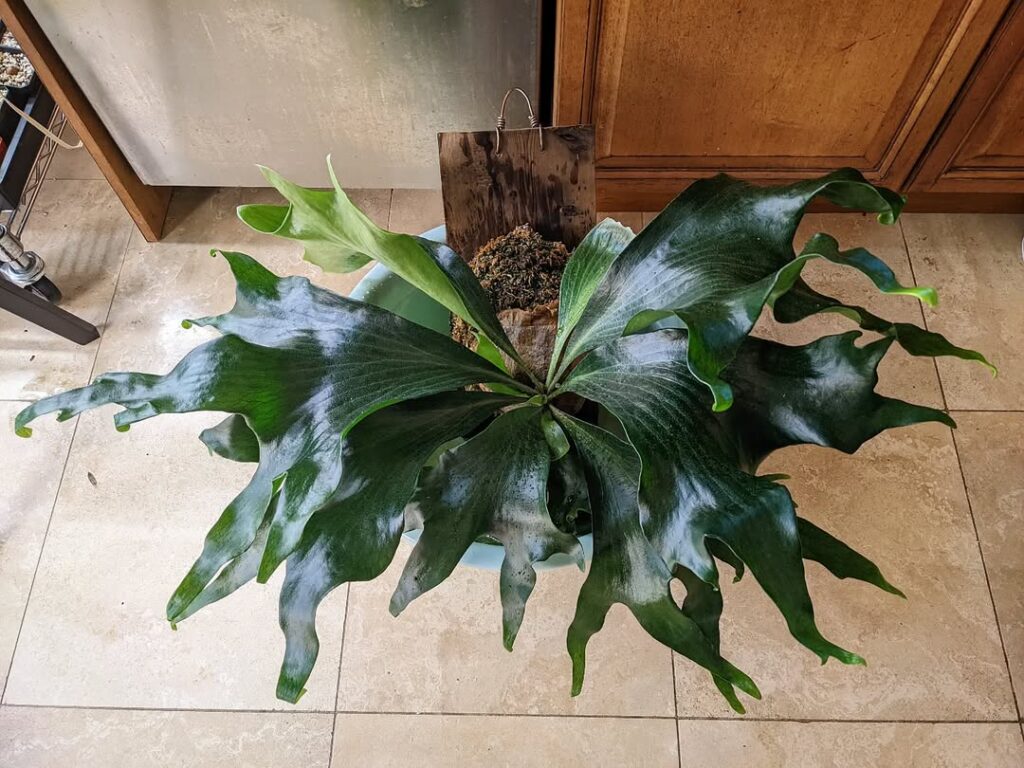
Platycerium andinum (South American Staghorn)
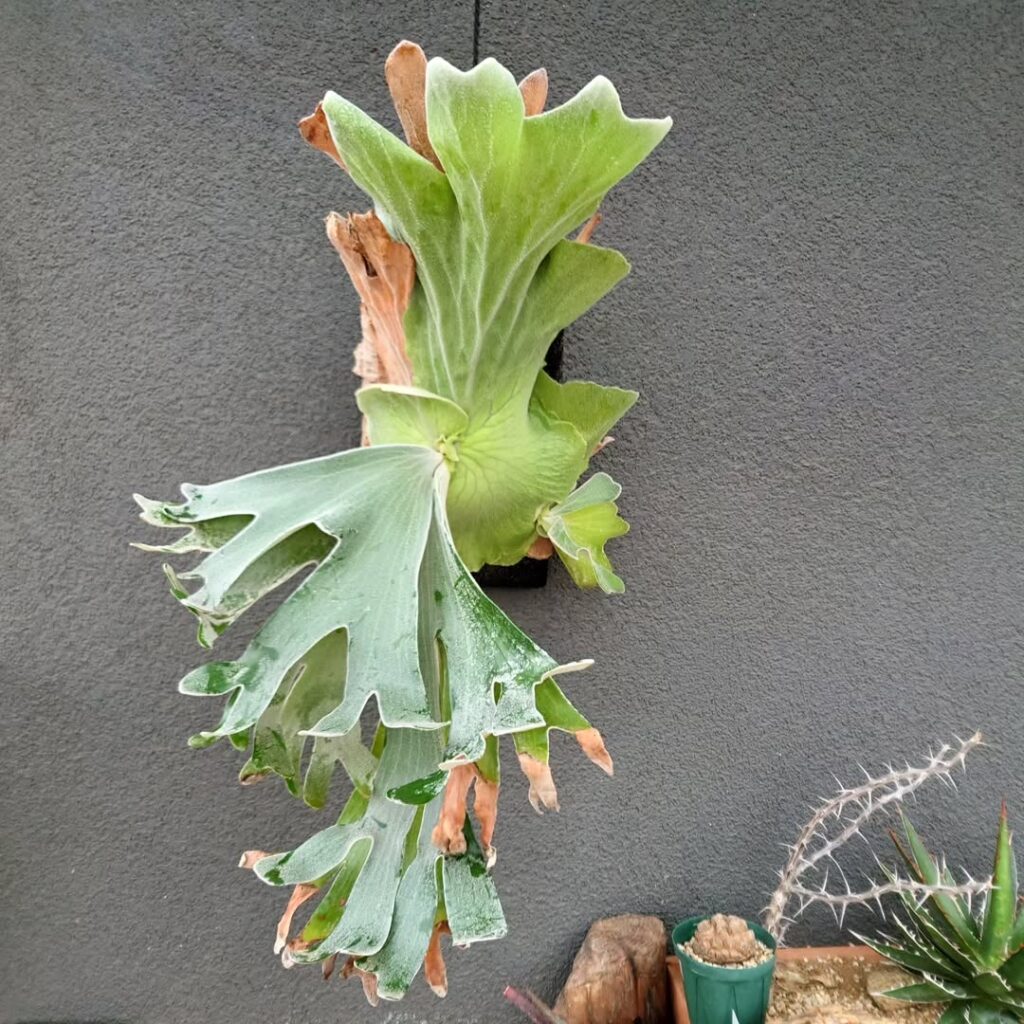
The only species native to South America, andinum is rare and often sought after by plant enthusiasts. Its uniquely shaped lobes make it distinct.
Platycerium andinum x willinckii (Platycerium saikaew)
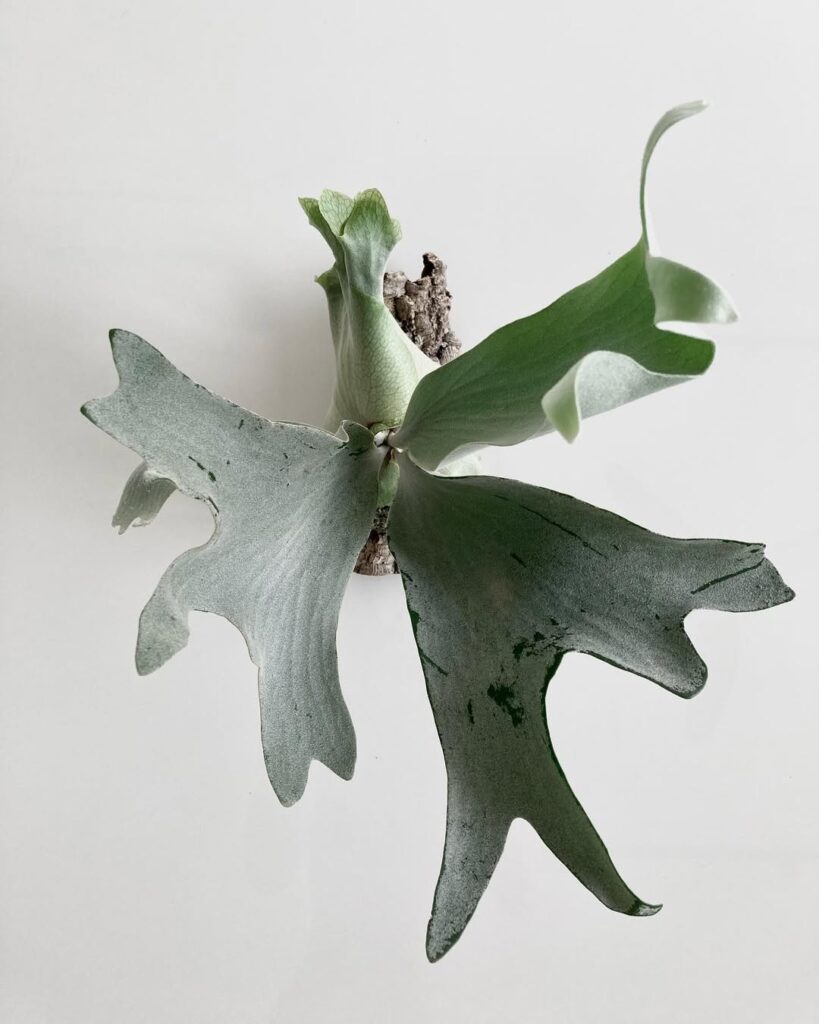
Platycerium andinum x elephantotis (Platycerium antis)
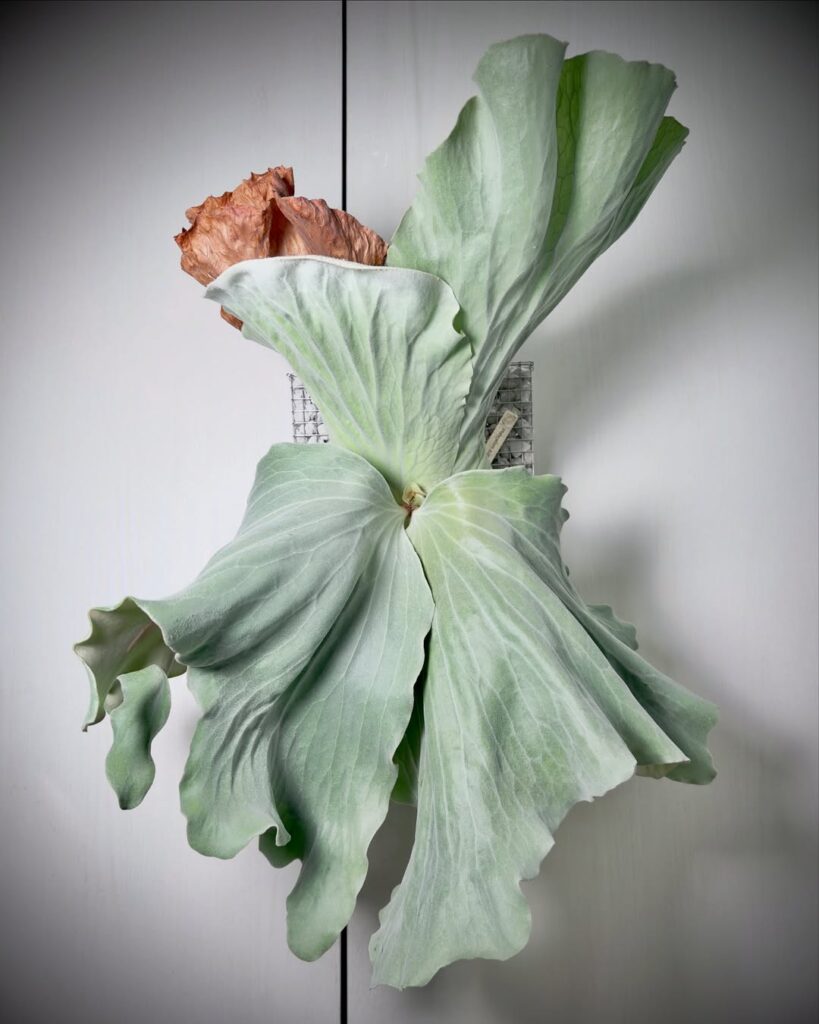
Platycerium alcicorne (African Staghorn Fern)
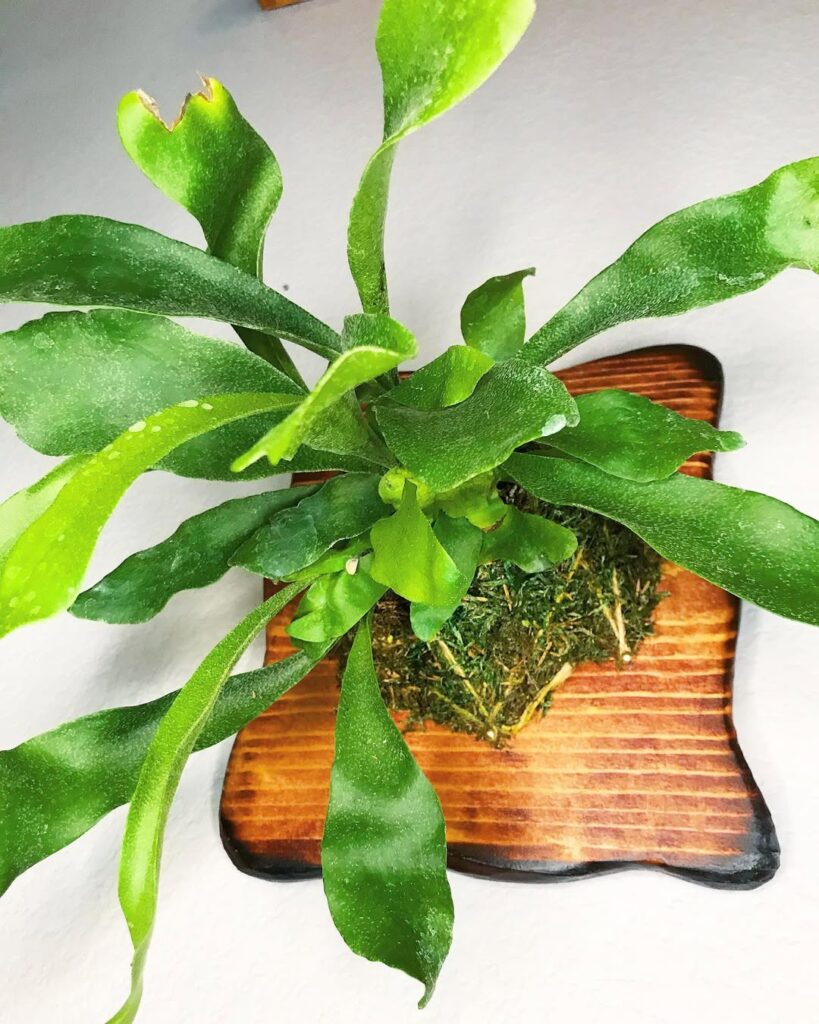
Known for its ability to change color depending on light exposure, alcicorne thrives in humid conditions.
Platycerium alcicorne ‘Africa’
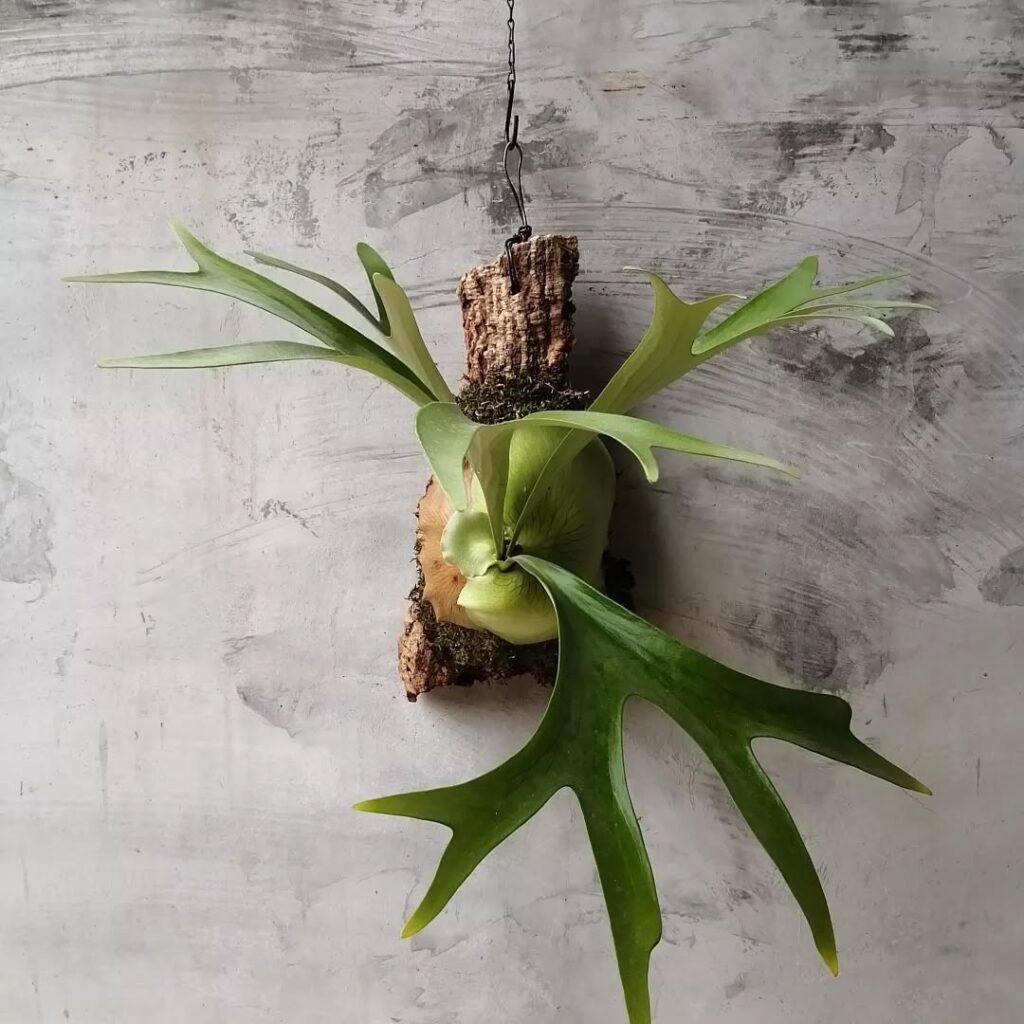
Platycerium alcicorne ‘Gorgon’
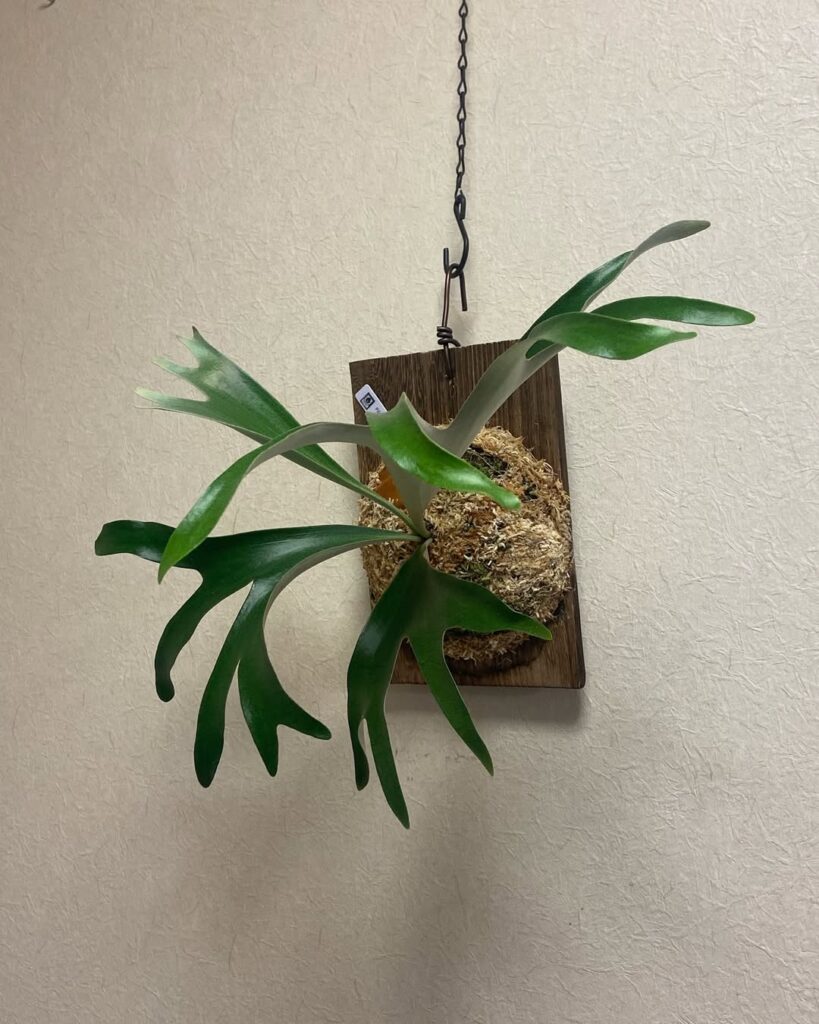
Platycerium coronarium
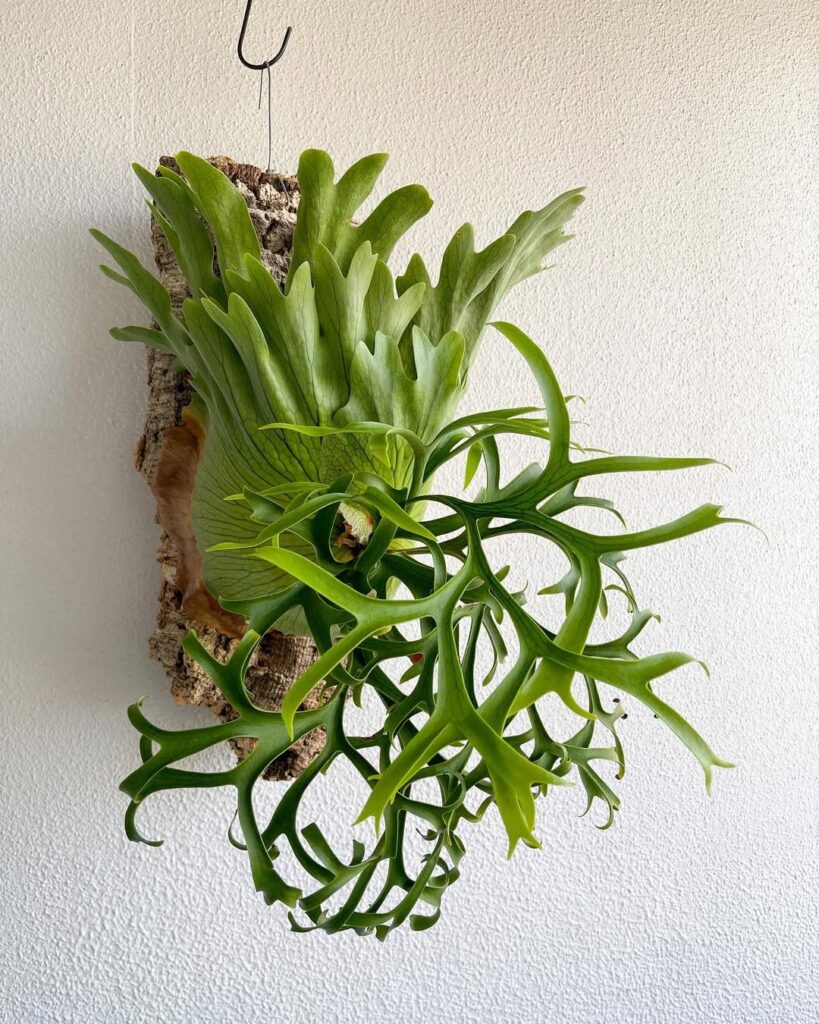
A dramatic species with large, deeply lobed fronds that resemble a crown. It thrives in humid environments and is often found in Southeast Asia.
Platycerium coronarium ‘Dwarf’
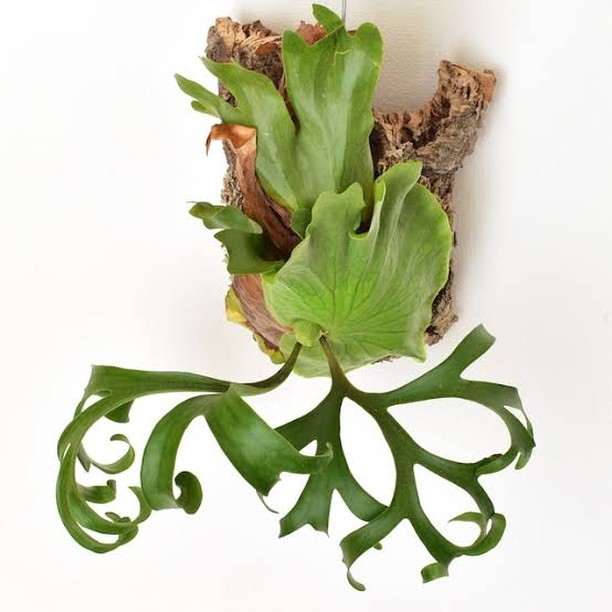
Platycerium coronarium ‘Philippines’
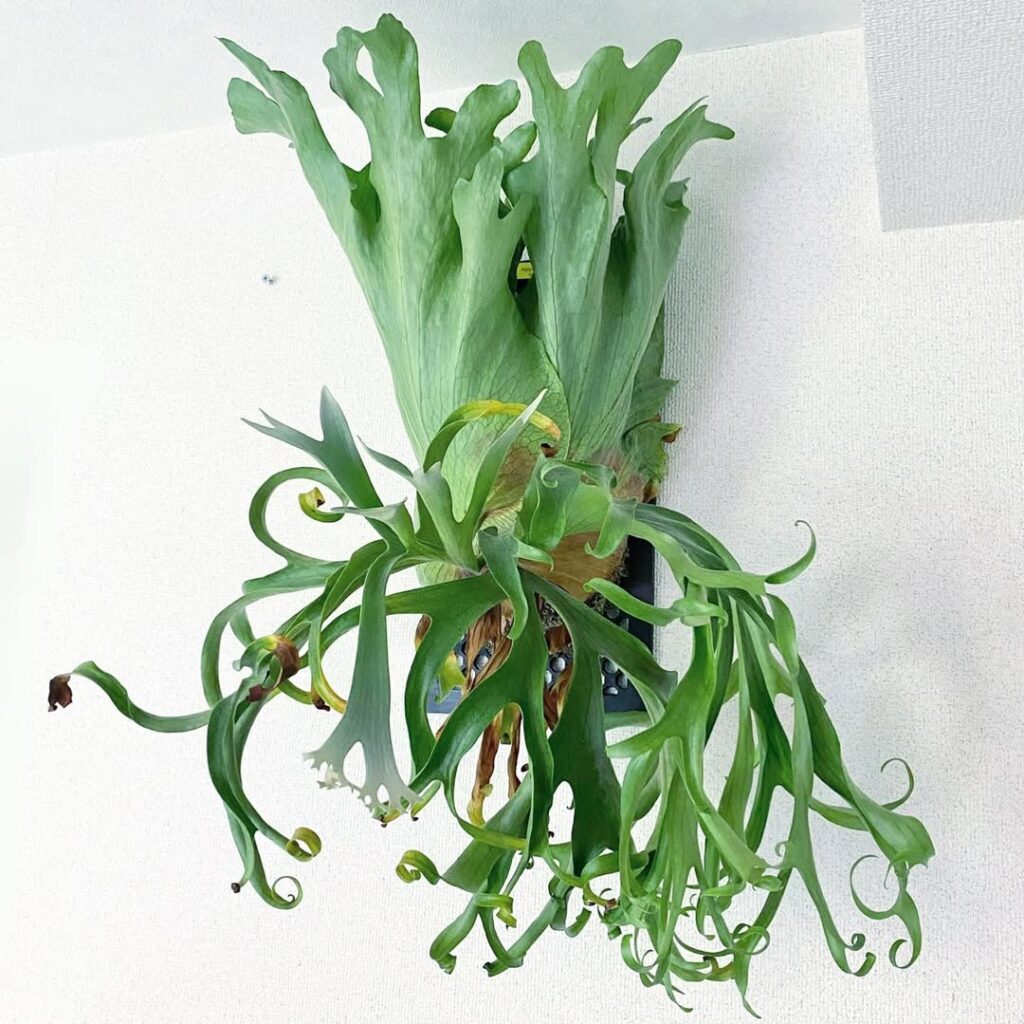
Platycerium coronarium ‘Philippines Dwarf’
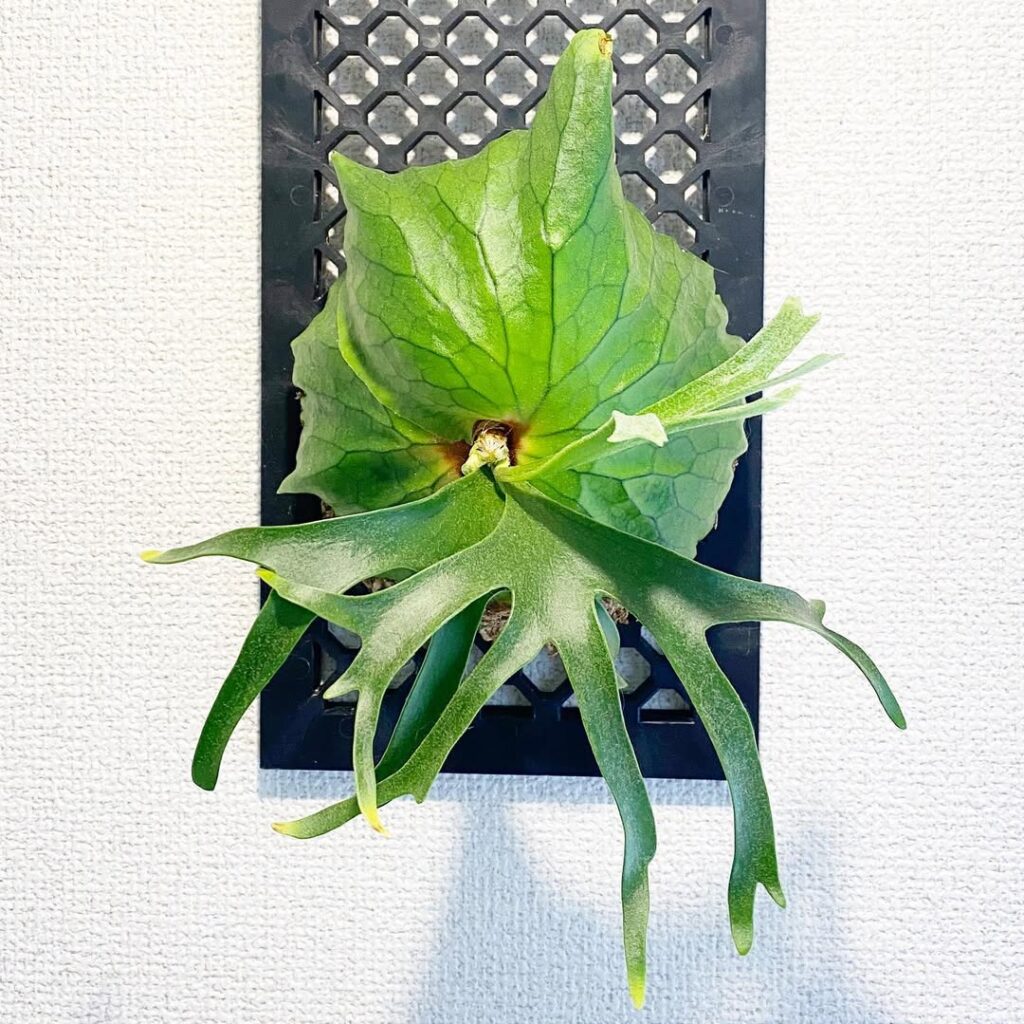
Platycerium ridleyi
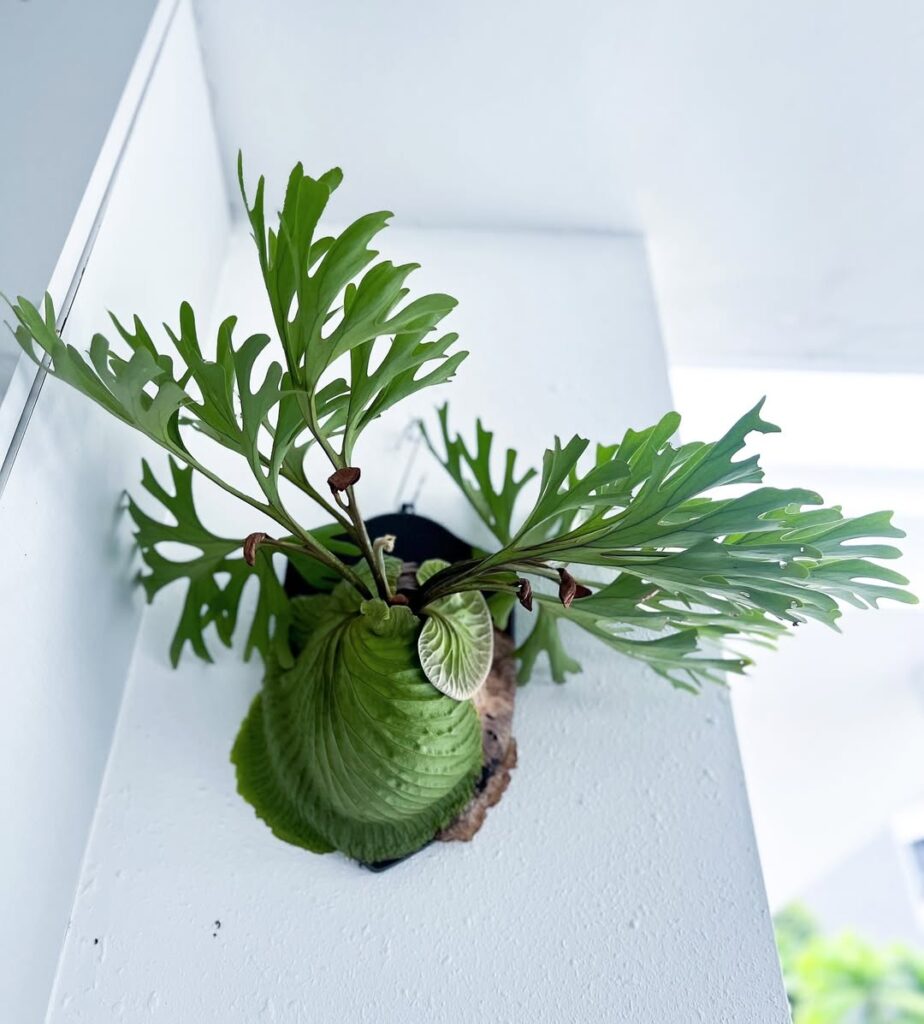
This species has compact, rounded fronds and prefers high humidity. It’s more delicate than other staghorns and requires careful watering.
Platycerium ridleyi ‘Dwarf’
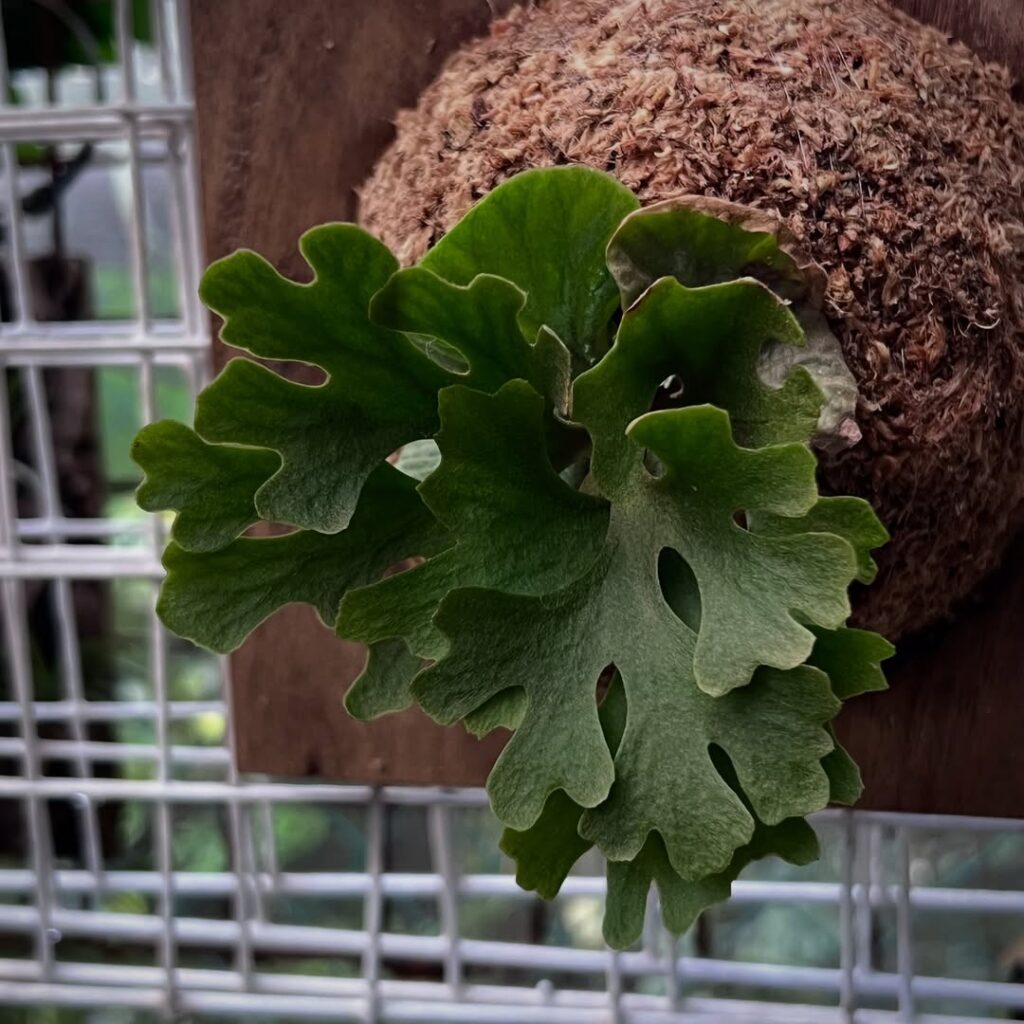
Platycerium ridleyi ‘Dwarf Silver’
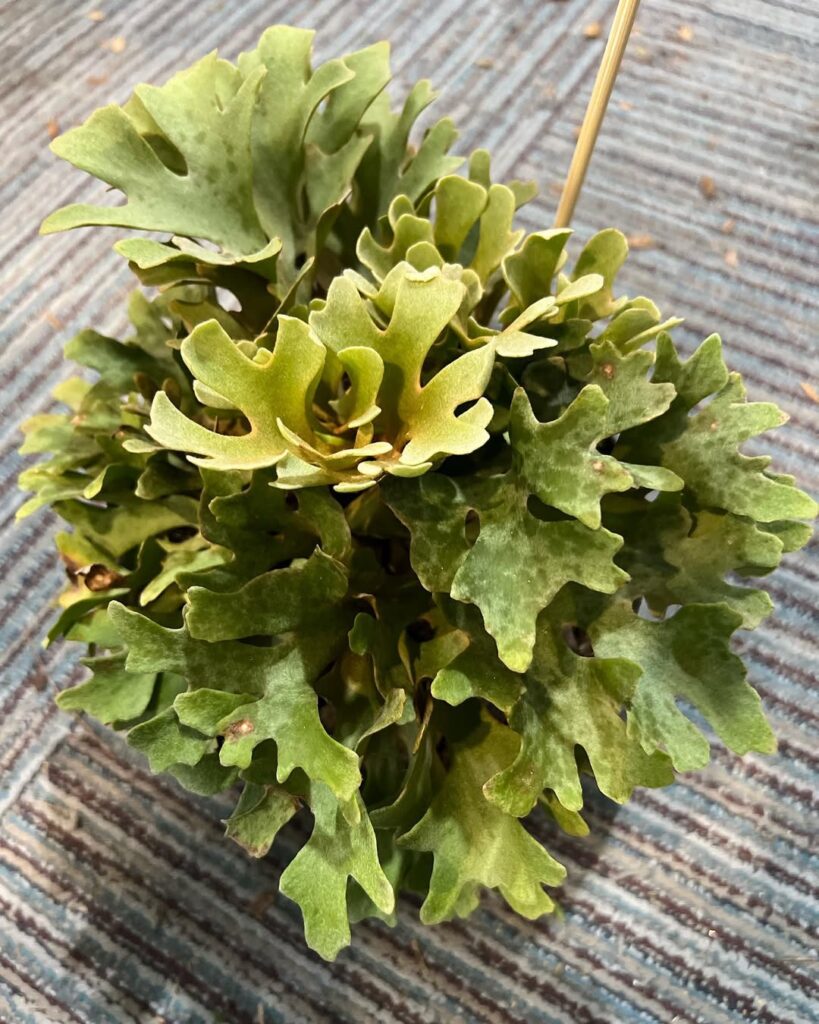
Platycerium wandae
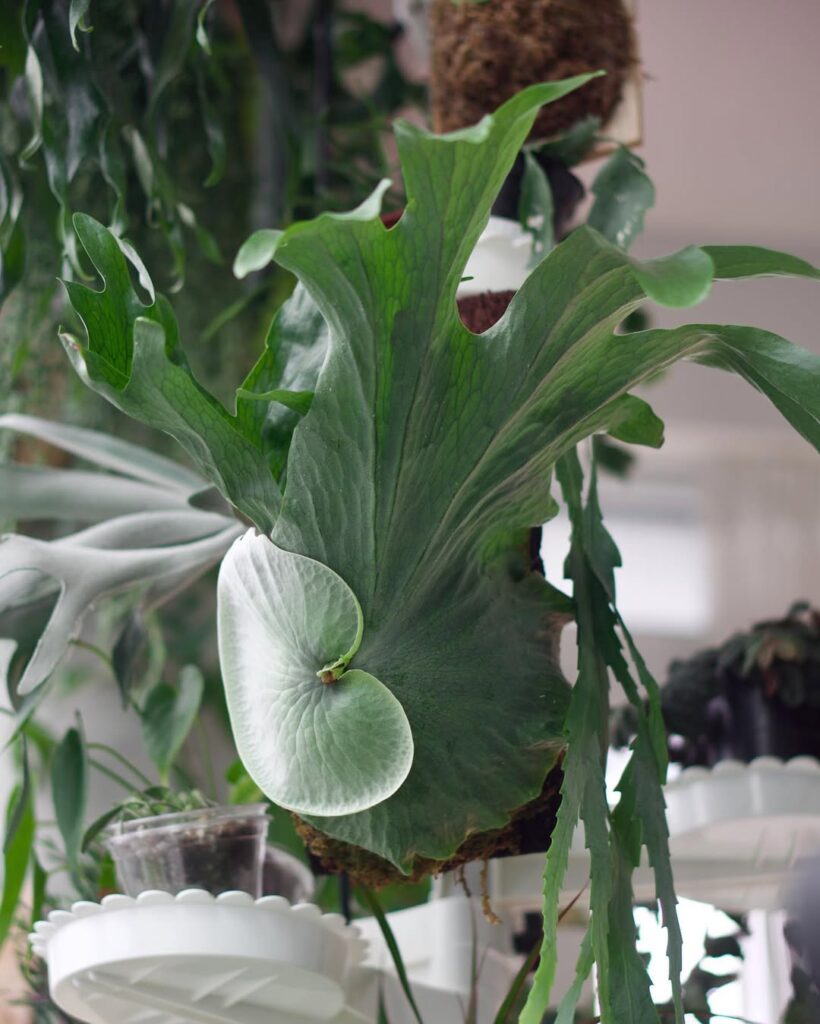
One of the largest species, wandae produces massive shield fronds and is a prized collector’s plant.
Platycerium wandae ‘Dwarf’
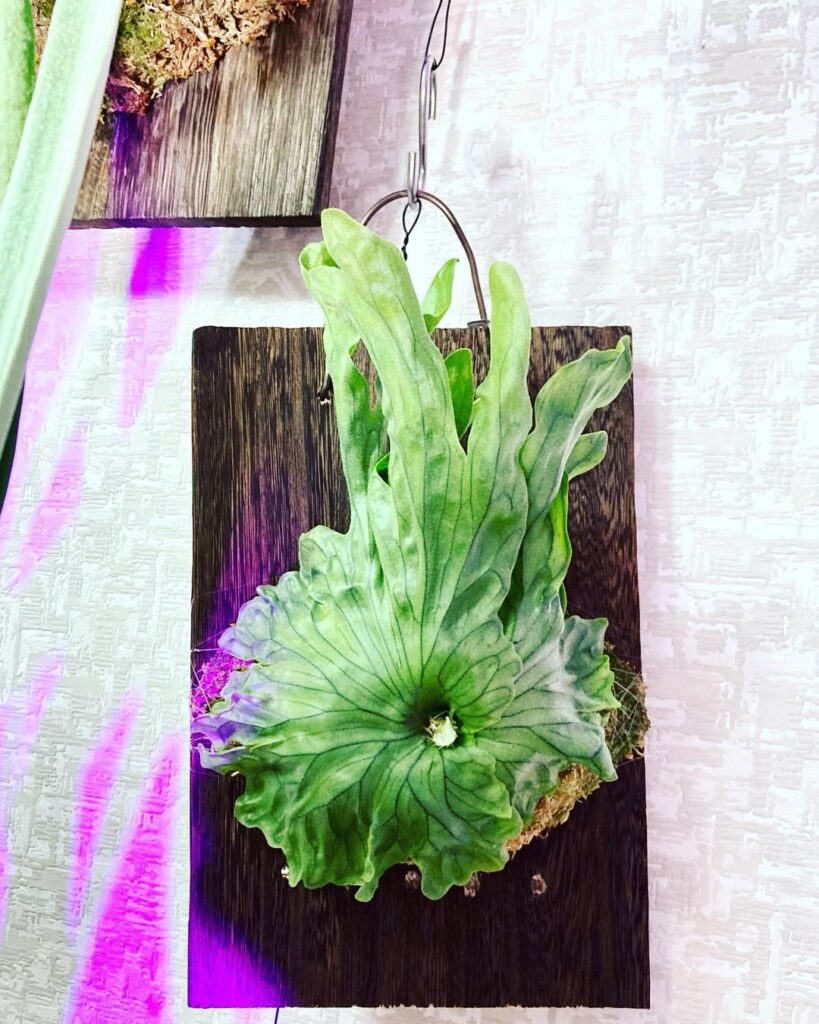
Platycerium stemaria
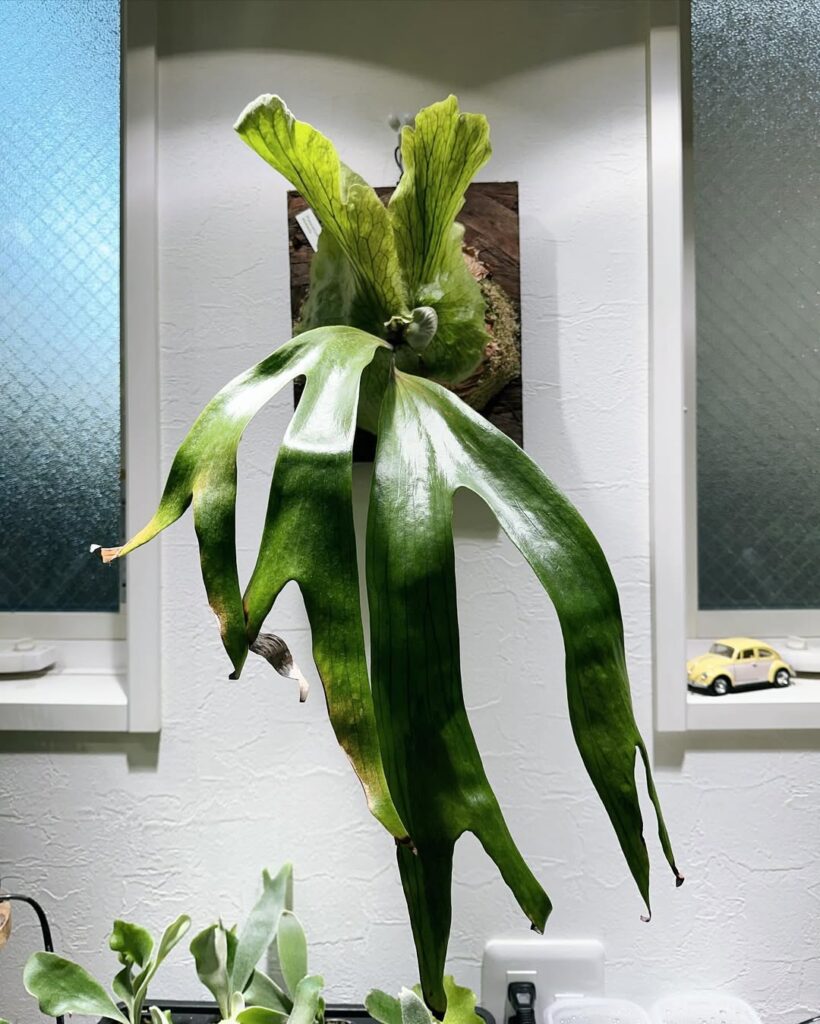
Known for its elongated, forked fronds, this African species has a striking appearance.
Platycerium stemaria ‘Laurentii’
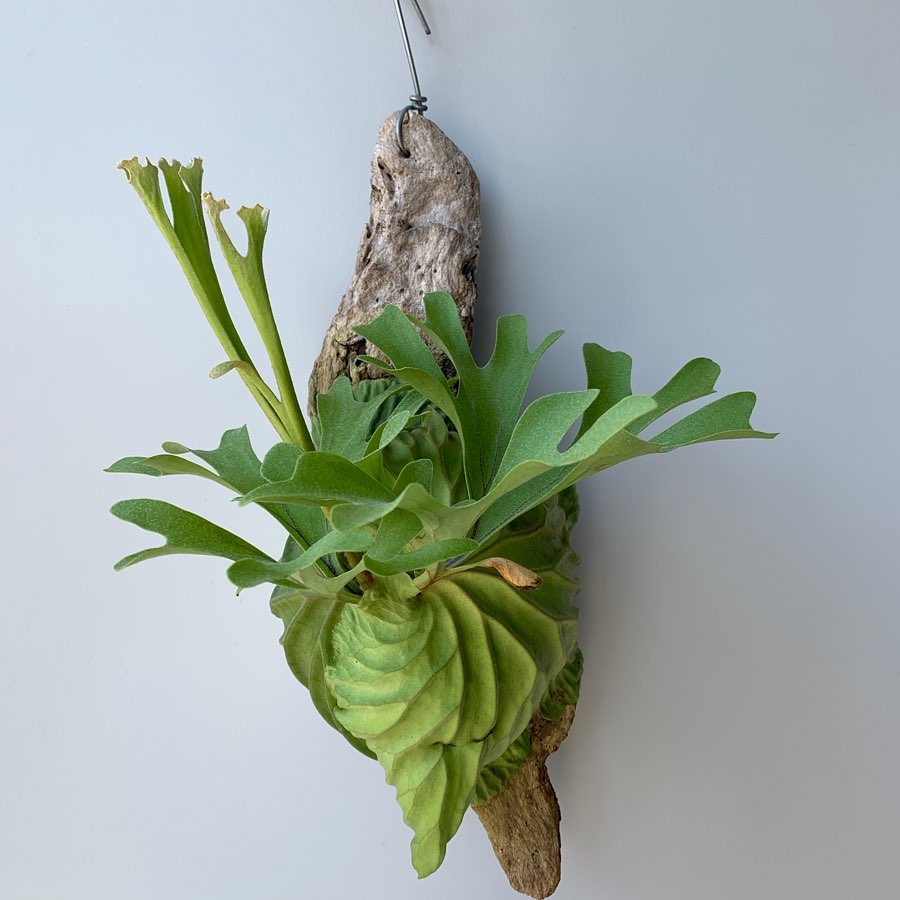
Platycerium stemaria ‘White’
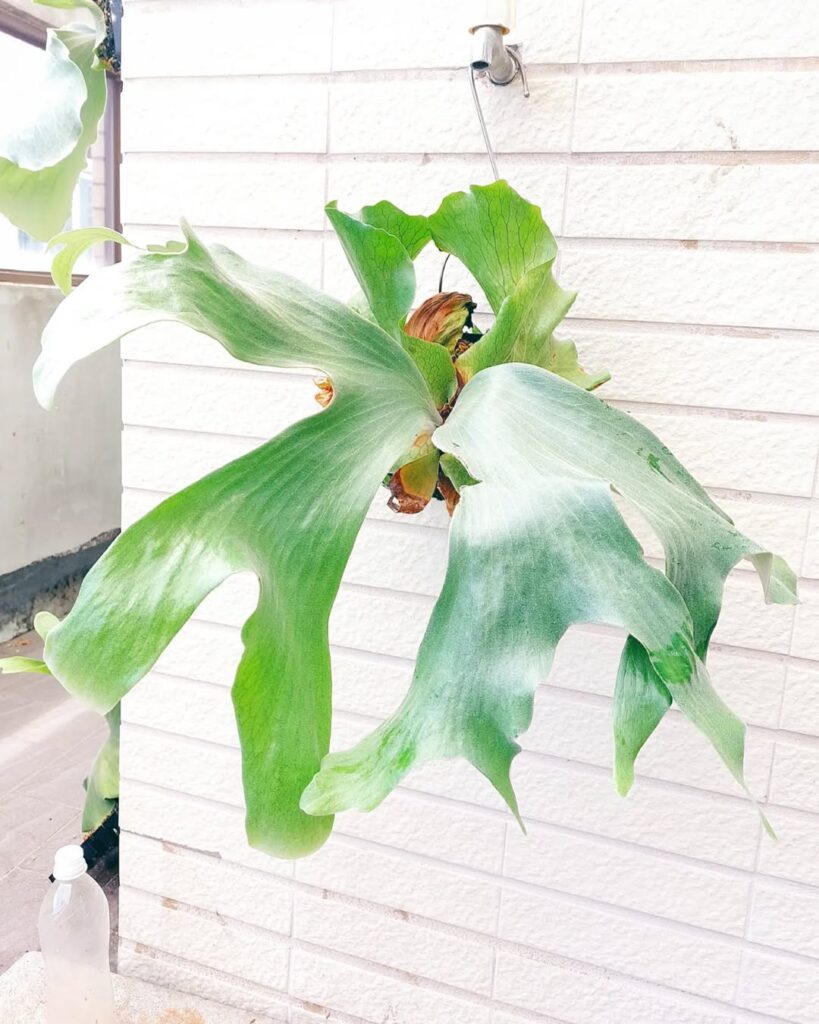
Platycerium madagascariense

Native to Madagascar, this species has thick, leathery fronds and thrives in warm, tropical conditions.
Platycerium elephantotis
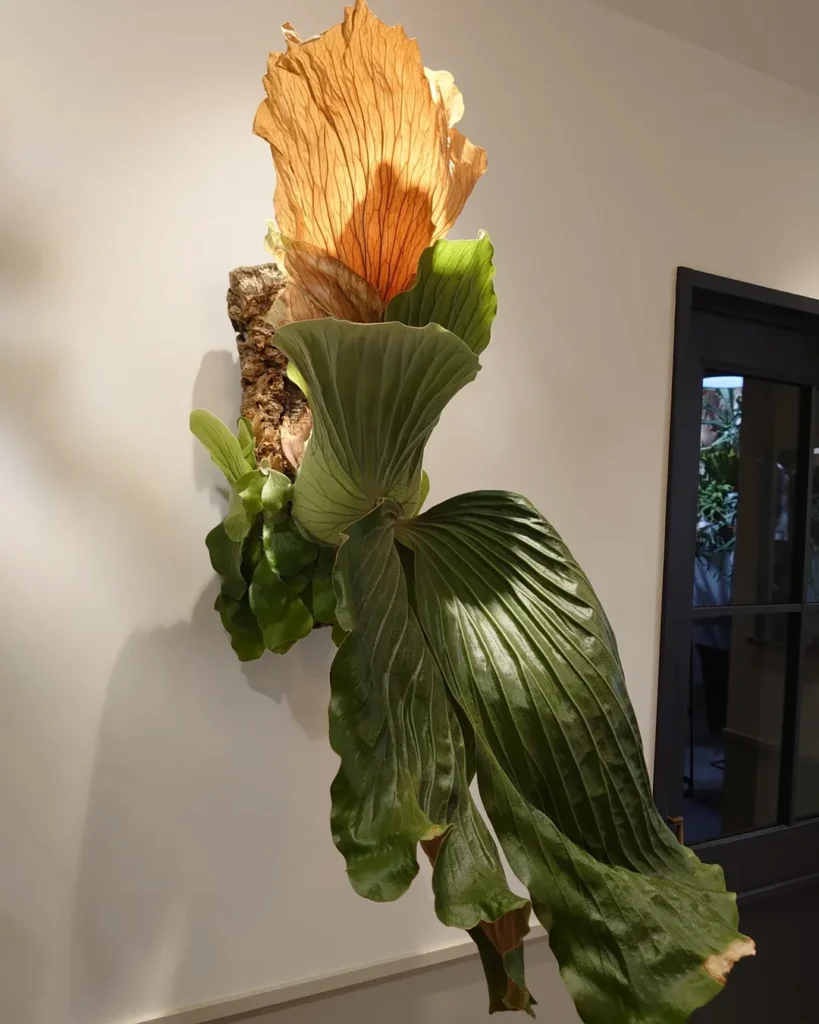
Unlike most staghorns, elephantotis has broad, wavy fronds rather than deeply forked ones.
Platycerium elephantotis ‘Silver’
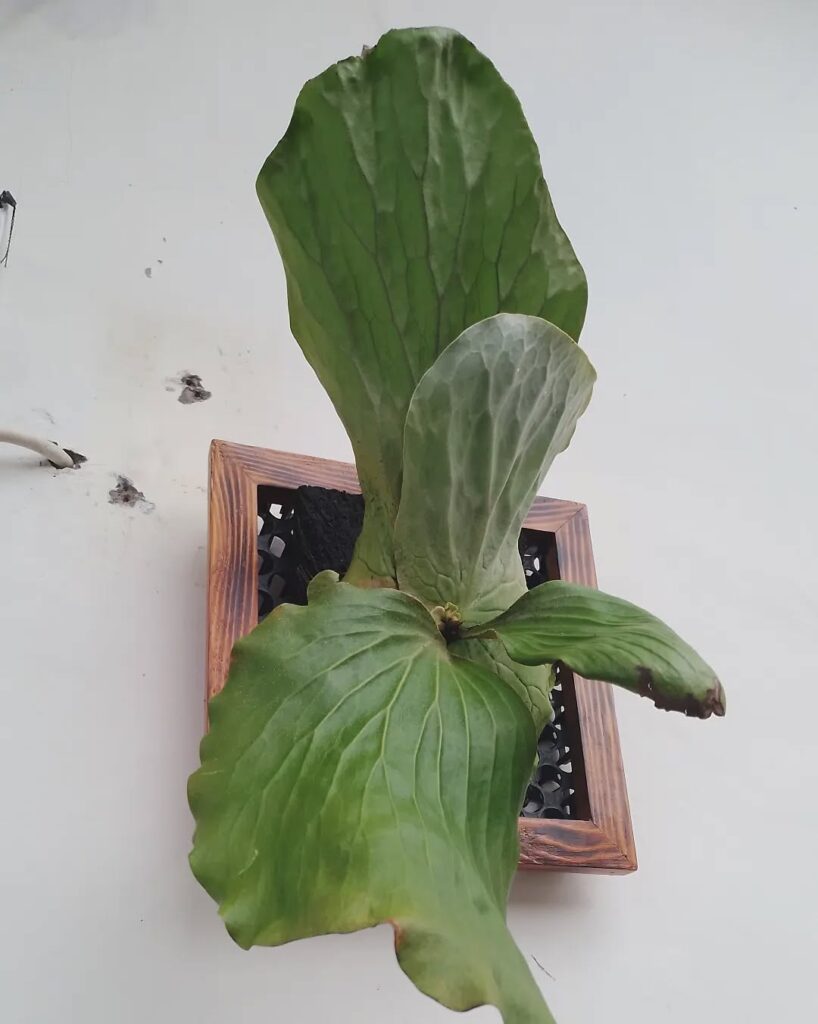
Platycerium elephantotis x alcicorne ‘Madagascar’
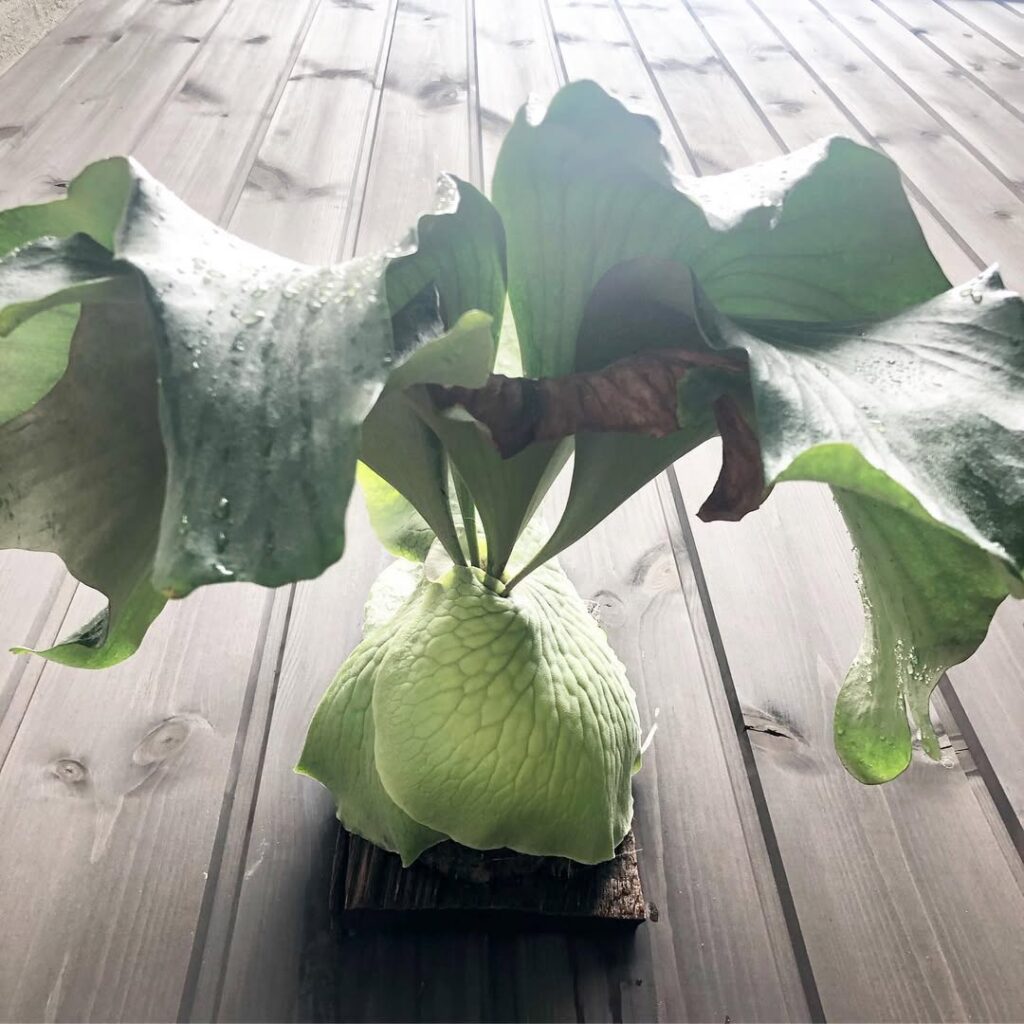
Platycerium elephantotis x willinckii
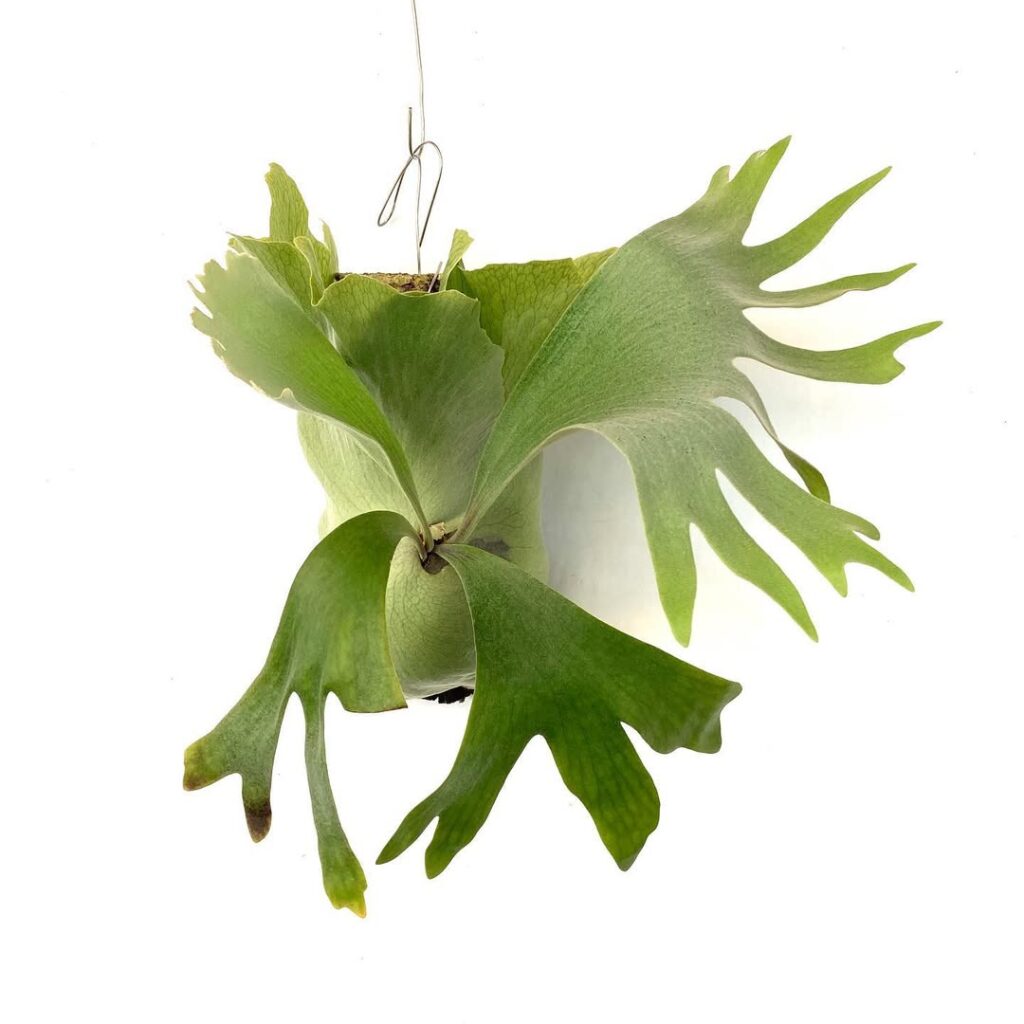
Platycerium quadridichotomum
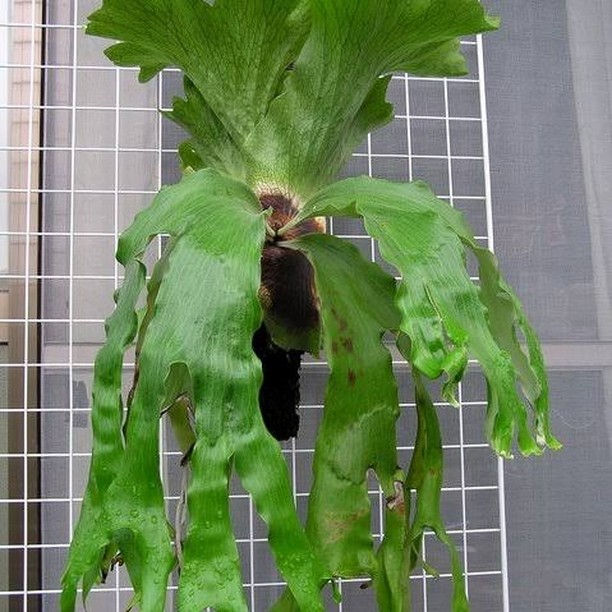
A rare species with four-way branching fronds, making it distinct from other staghorns.
Platycerium holttumii
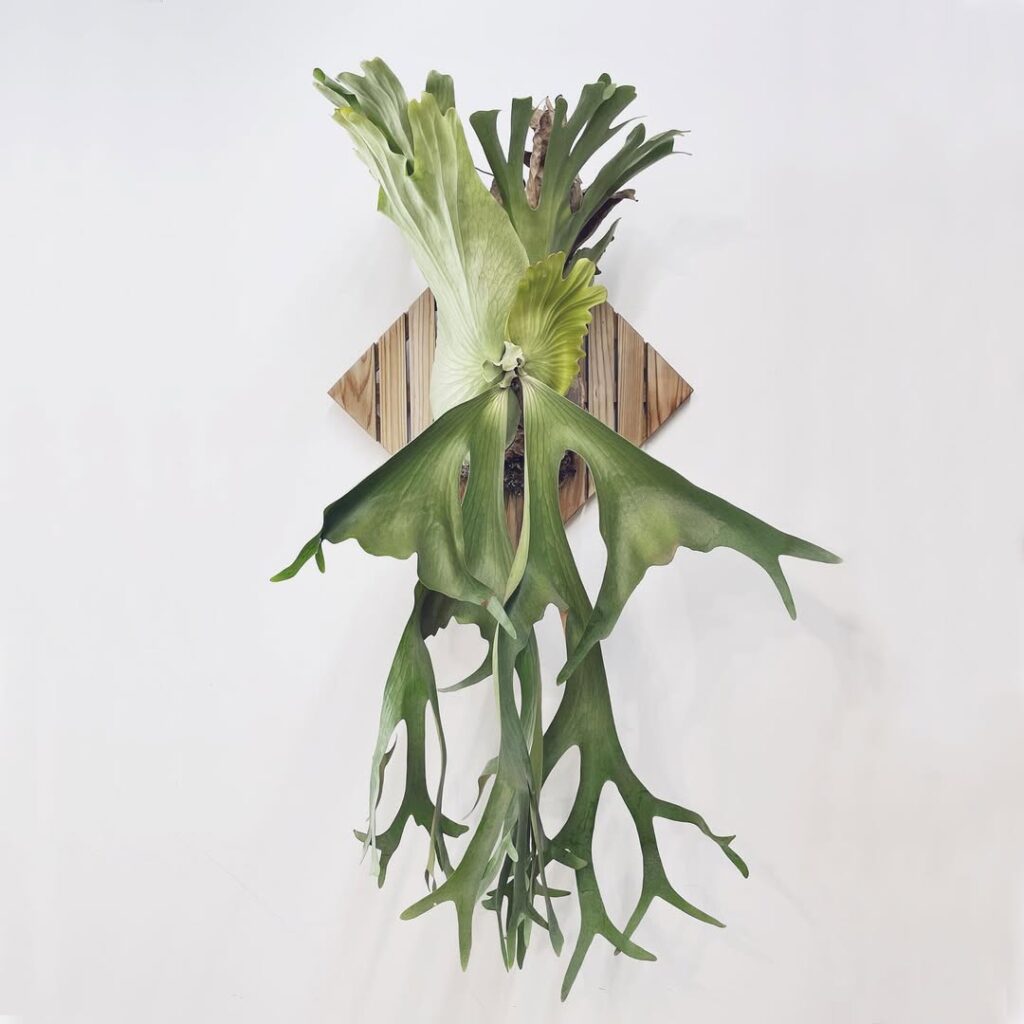
Native to Thailand, this species has large, upright shield fronds and prefers high humidity.
Platycerium holttumii x ellisii
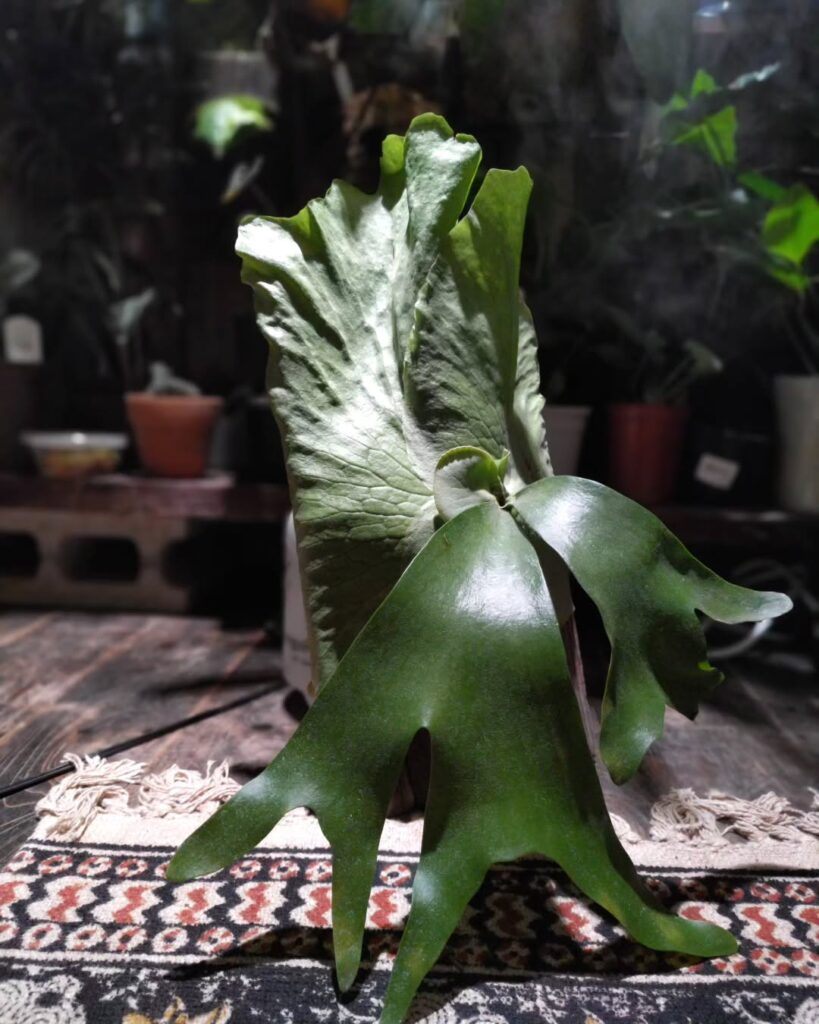
Platycerium grande
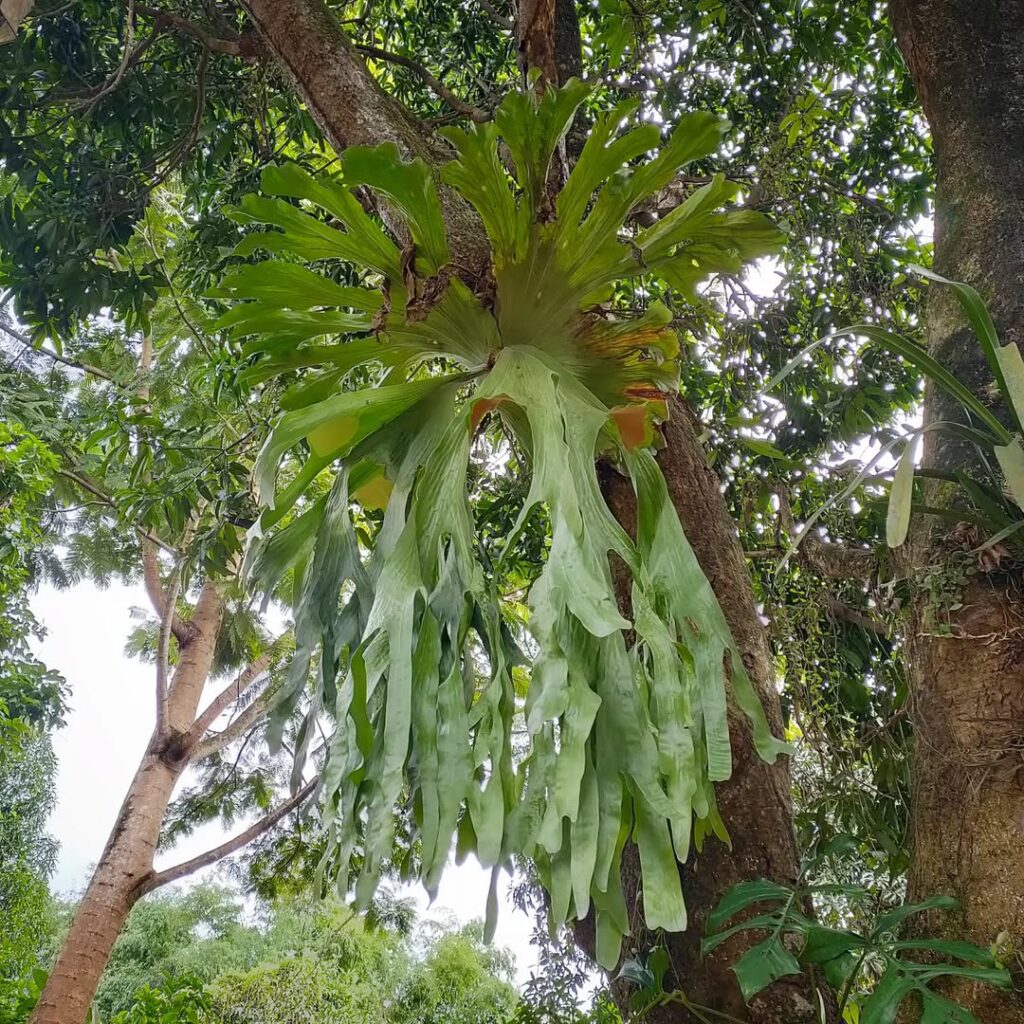
A stunning species with long, flowing fronds, often mistaken for superbum due to its size.
Platycerium grande x elephantotis
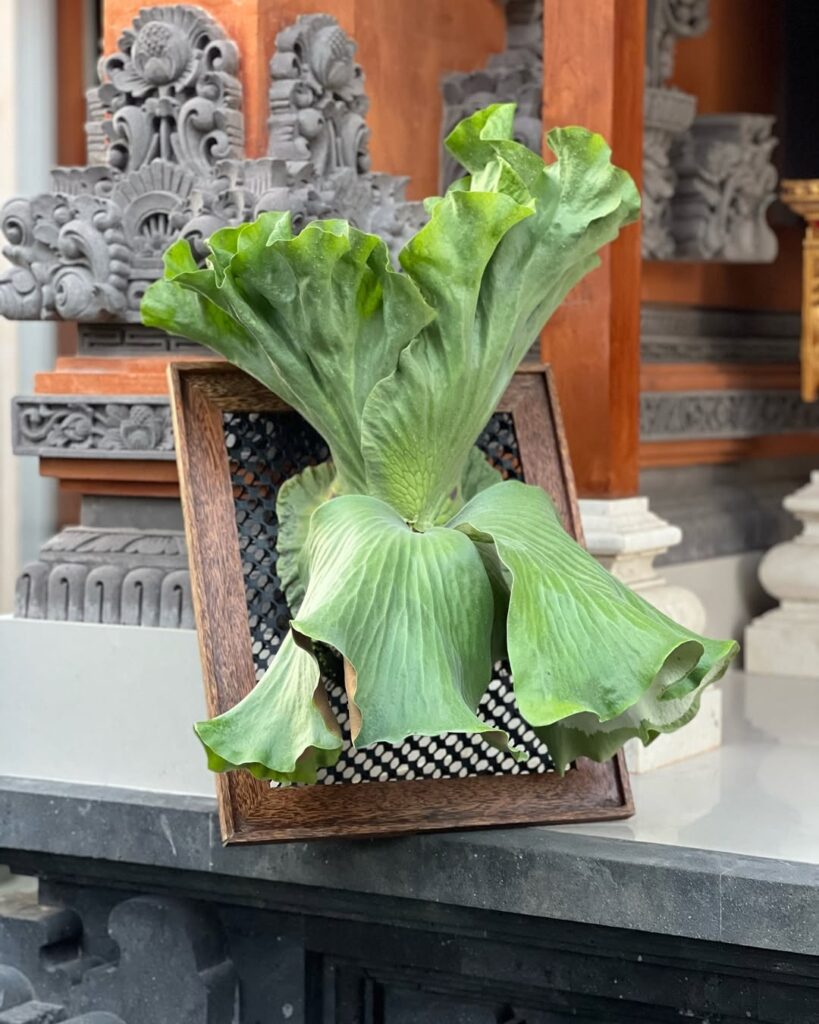
Platycerium willinckii
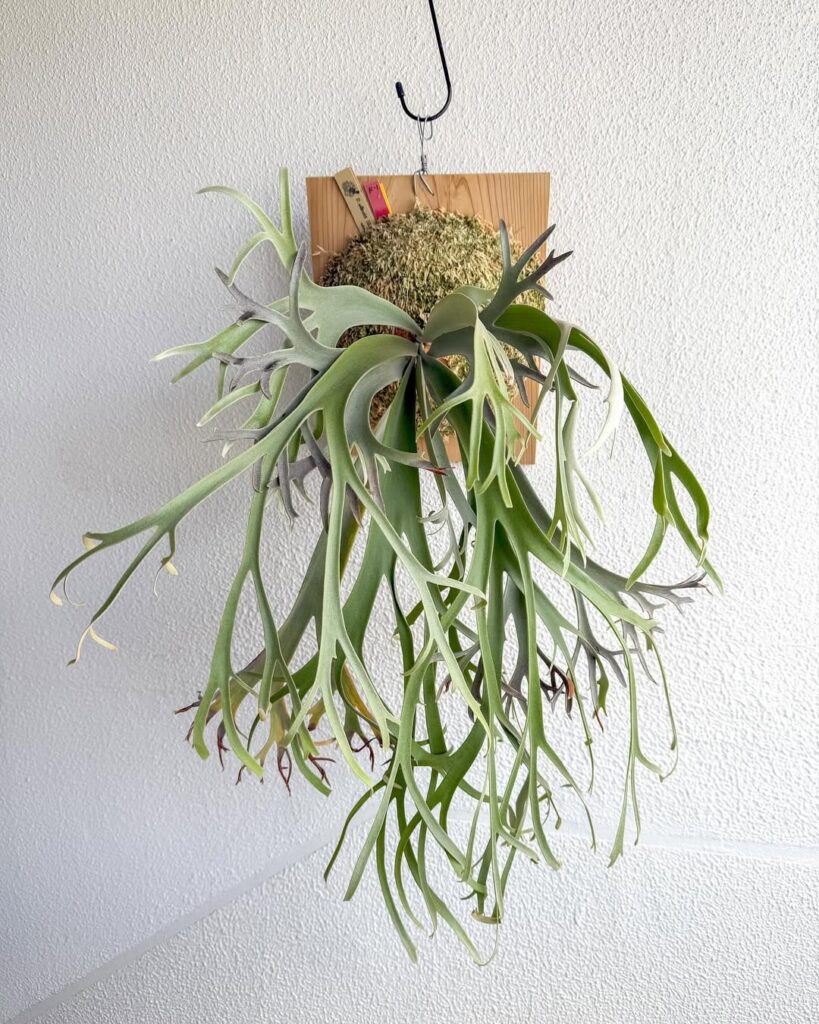
This species has narrow, deeply lobed fronds and is popular among collectors.
Platycerium willinckii ‘Moonlight’
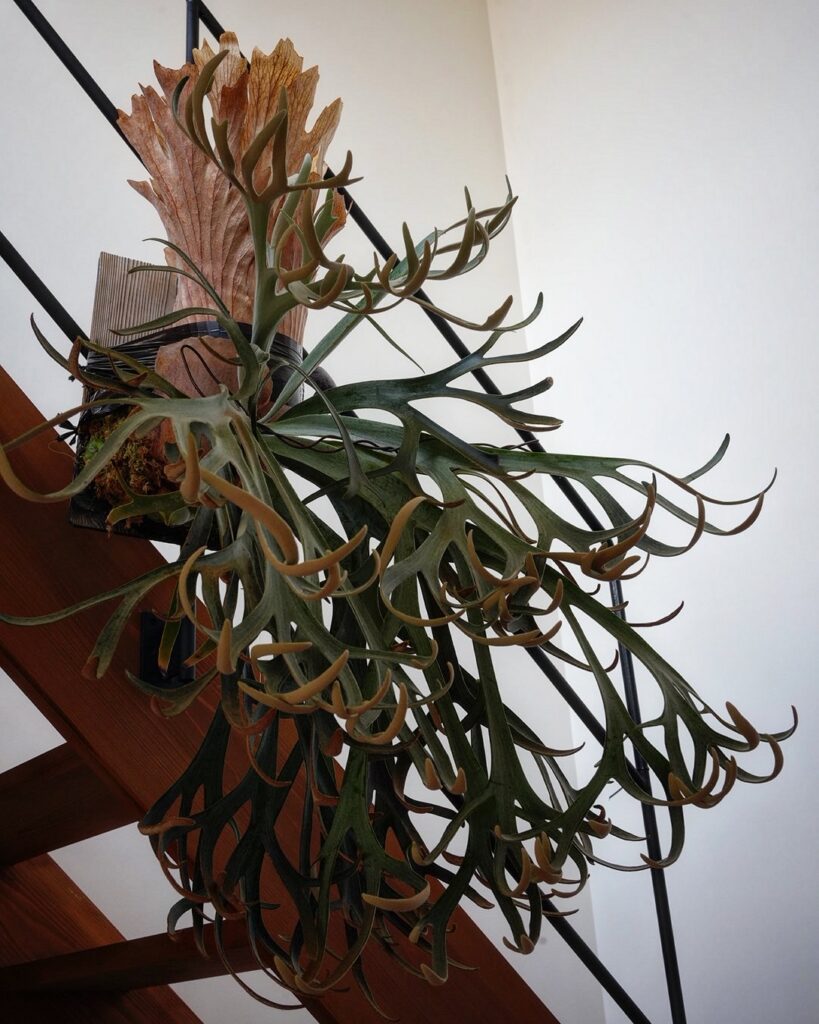
Platycerium willinckii ‘Anne’
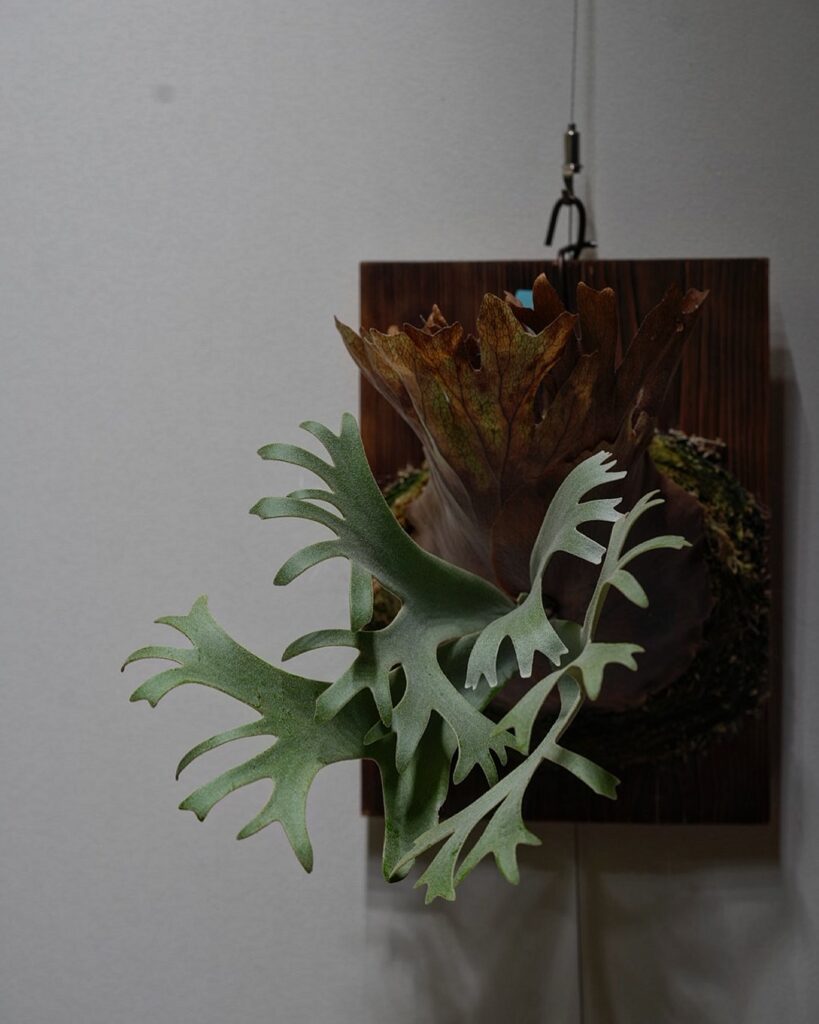
Platycerium willinckii ‘Silvery Dwarf’
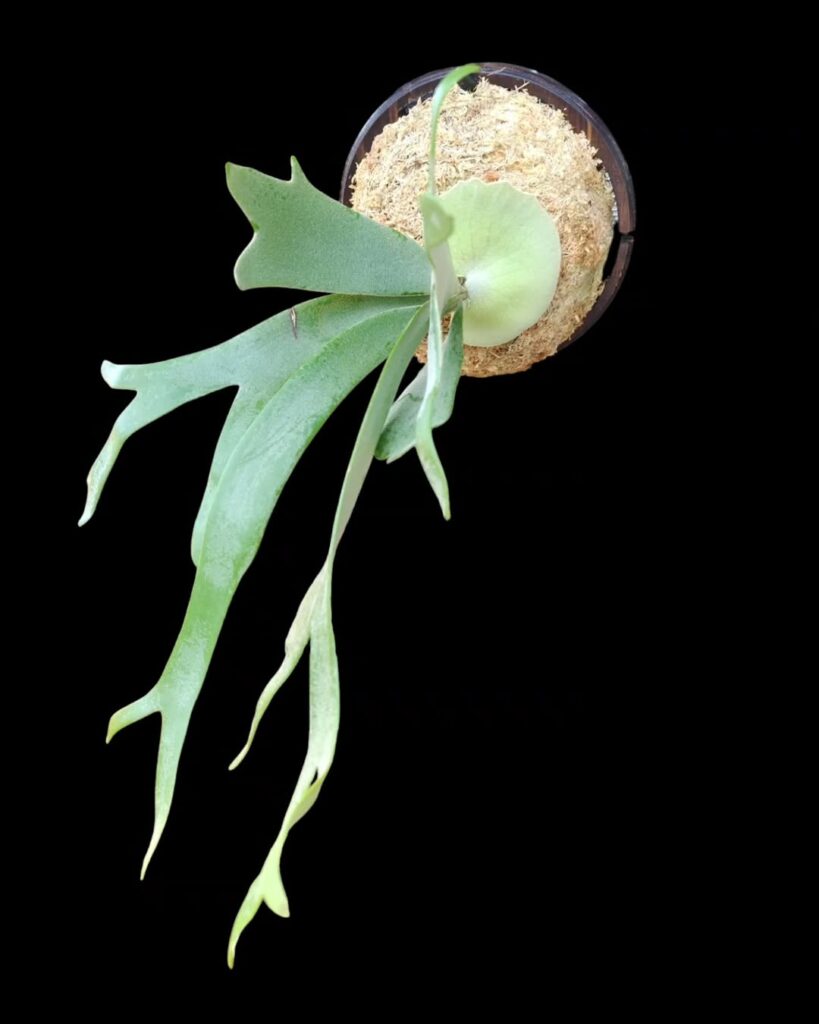
Platycerium willinckii ‘Kaguya’
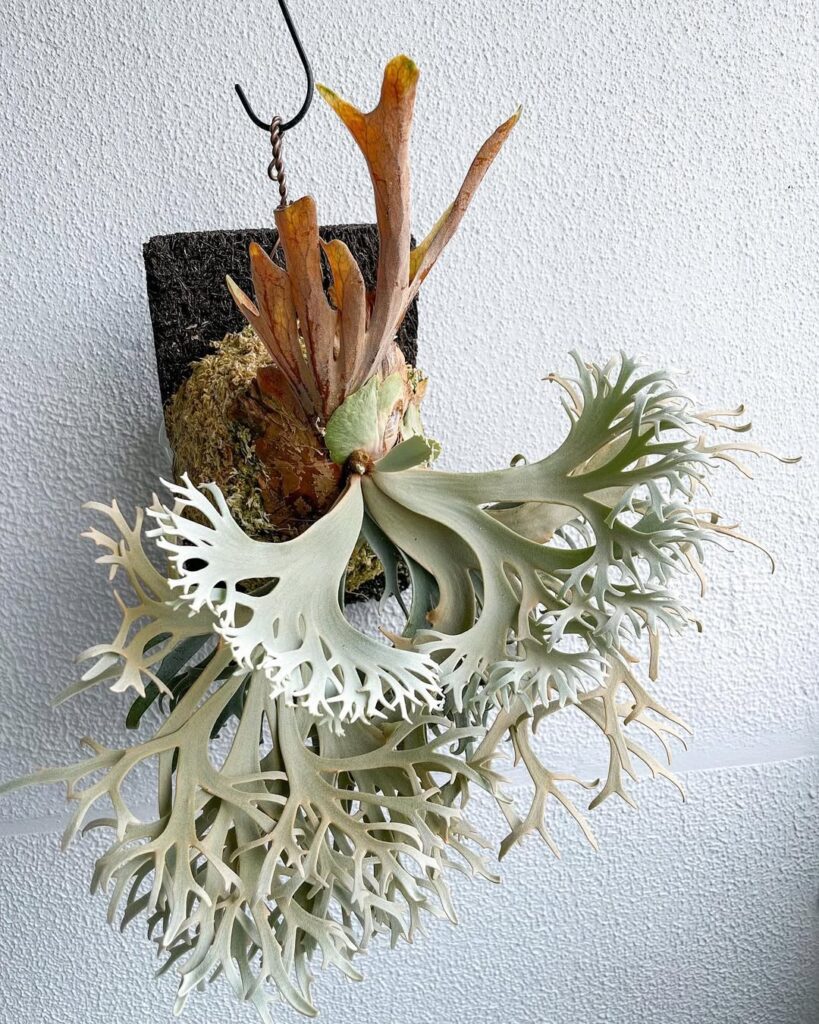
Platycerium willinckii ‘Dwarf’
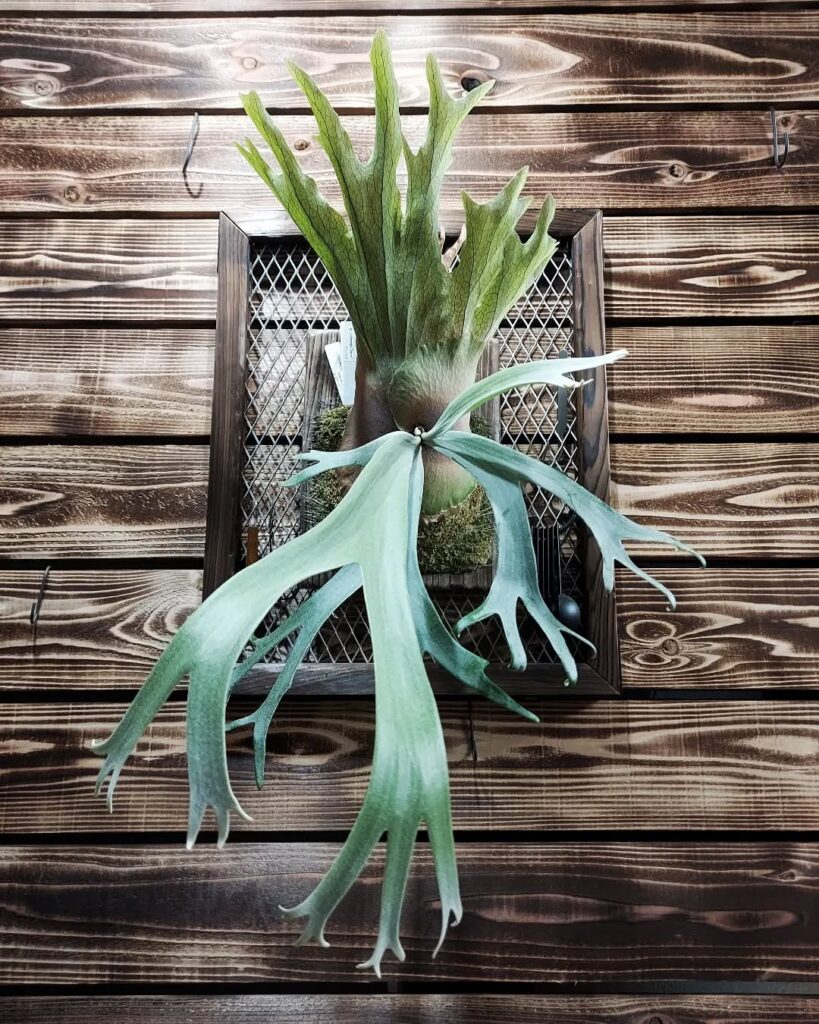
Platycerium willinckii ‘Bacteria’
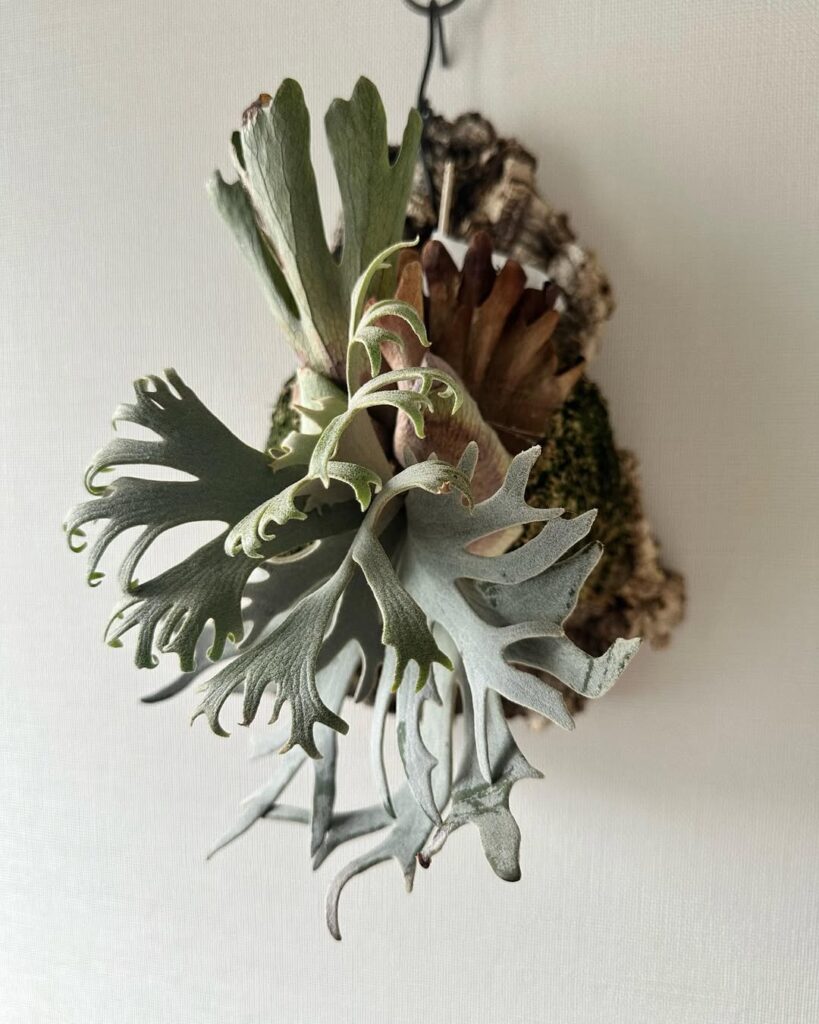
Platycerium willinckii ‘Dwarf Bacteria’
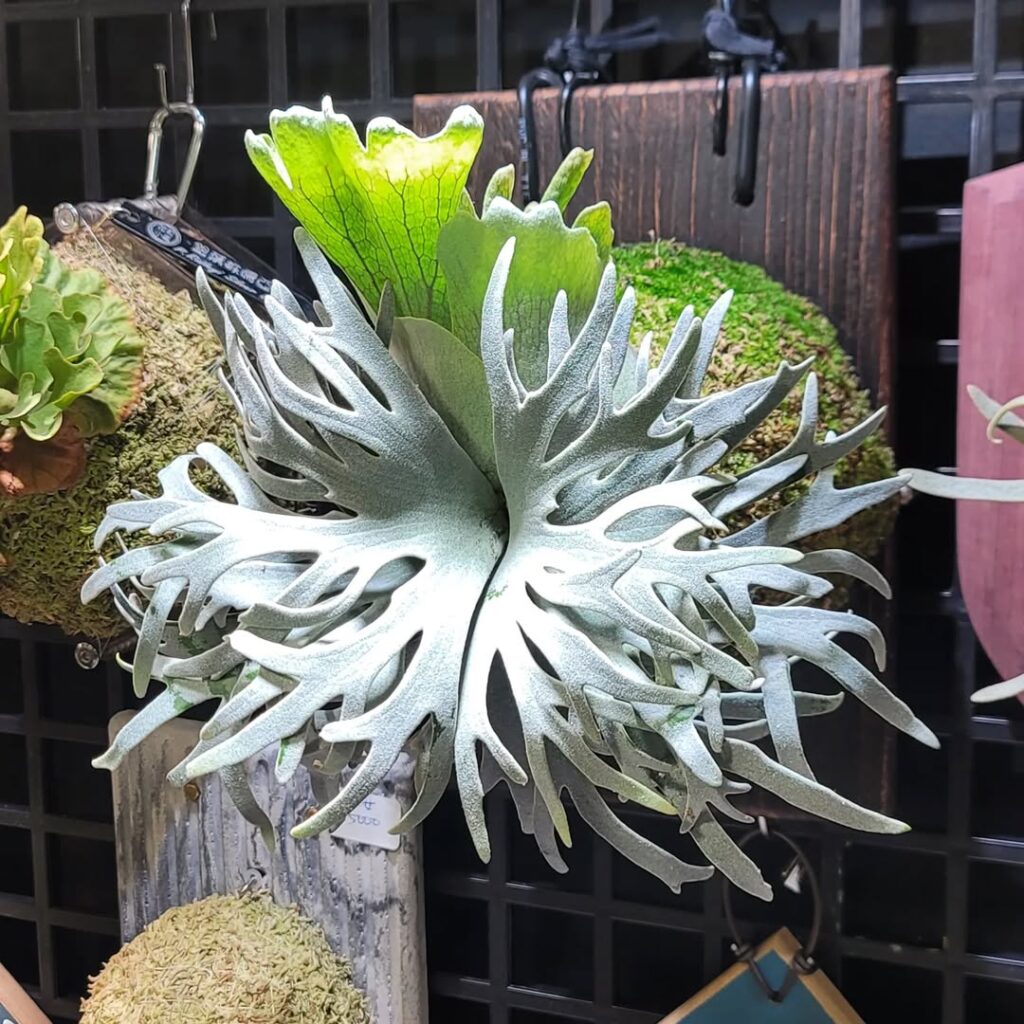
Platycerium vassei / Platycerium alcicorne ‘Madagascar’
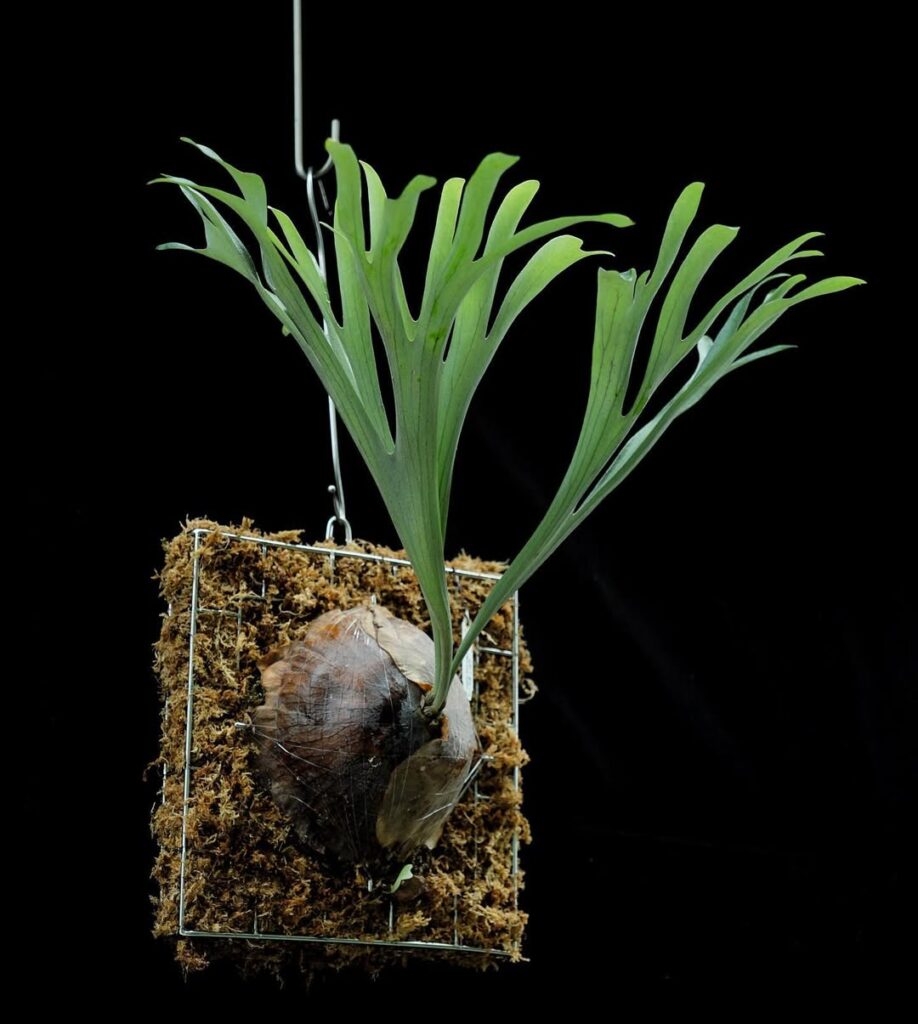
A lesser-known species with compact, rounded fronds, thriving in tropical conditions.
How to Care for Staghorn Ferns
Though they look exotic, staghorn ferns are surprisingly manageable with the right approach!
Light:
These ferns enjoy bright, indirect light—think dappled sunlight filtering through tree branches. Avoid direct afternoon sun, which can scorch their fronds.
Watering:
Staghorns don’t grow in soil; instead, they absorb moisture through their roots and leaves. Mist them regularly and soak the entire plant every week or two, depending on humidity levels.
Humidity:
Since they are epiphytic (air plants), they love moisture! Aim for at least 50% humidity, which can be achieved by occasional misting or grouping them with other plants.
Feeding:
Use a diluted liquid fertilizer every month during the growing season (spring and summer) to encourage lush fronds.
Mounting & Potting:
These ferns are best displayed mounted on wood or hung in wire baskets with sphagnum moss. Ensure proper air circulation around their roots.
How to Propagate Staghorn Ferns
Want more staghorns? Here’s how you can propagate them:
Spores Method (Patience Required!):
- Like many ferns, staghorns reproduce through spores, found on the underside of fronds.
- Spores can be collected and sprinkled on damp sphagnum moss, but be prepared for slow growth—it can take months for tiny ferns to emerge!
Division Method (For Mature Plants):
- If your staghorn has developed pups (smaller offsets), gently separate them and attach them to their own board or basket.
- Keep them moist and in indirect light until they establish roots.
Final Thoughts
Staghorn ferns are more than just plants—they’re living sculptures, adding an elegant, wild touch to any space. Whether mounted indoors, growing outdoors on trees, or forming giant clusters in tropical gardens, these ferns captivate with their beauty and uniqueness.
